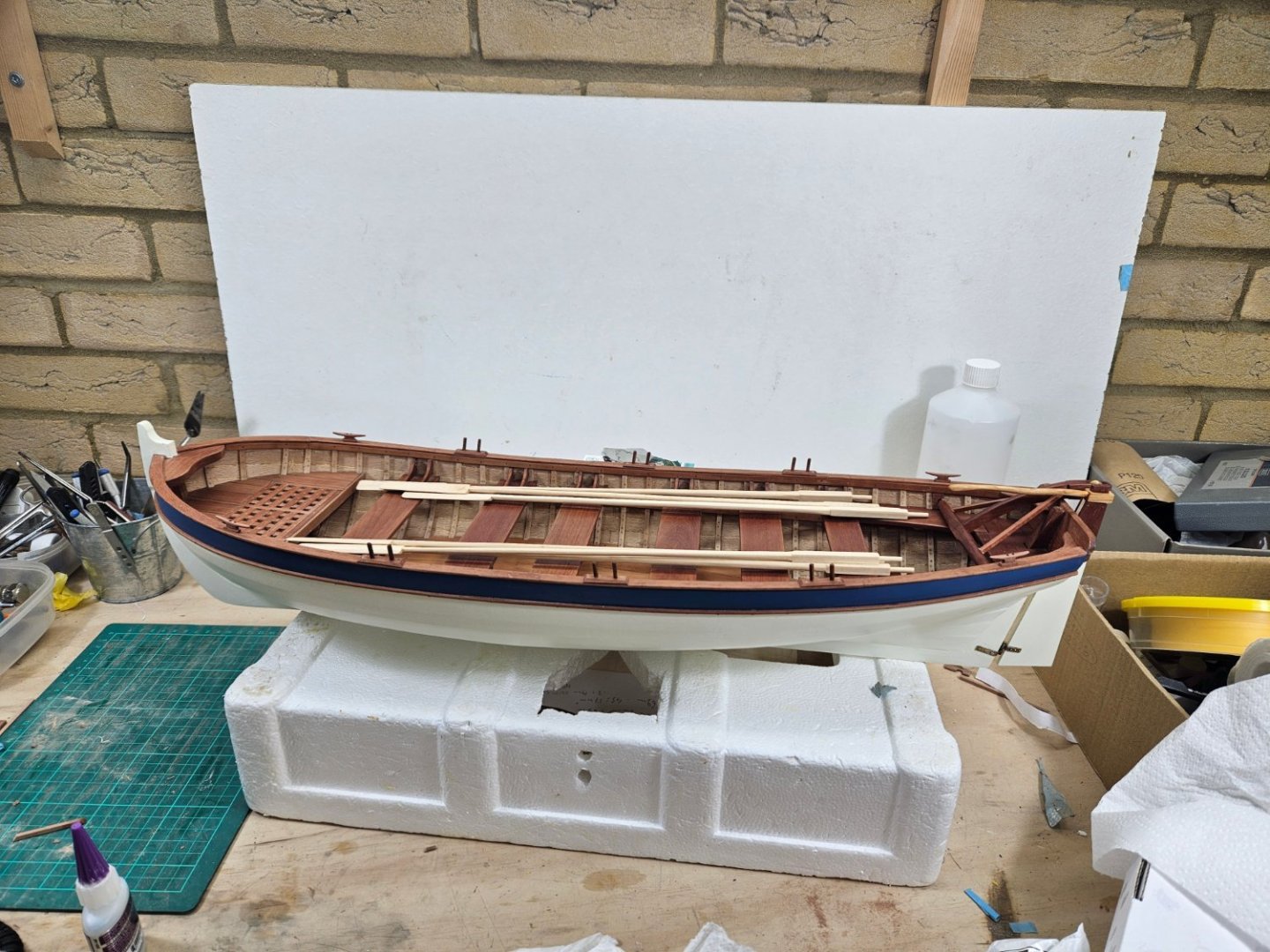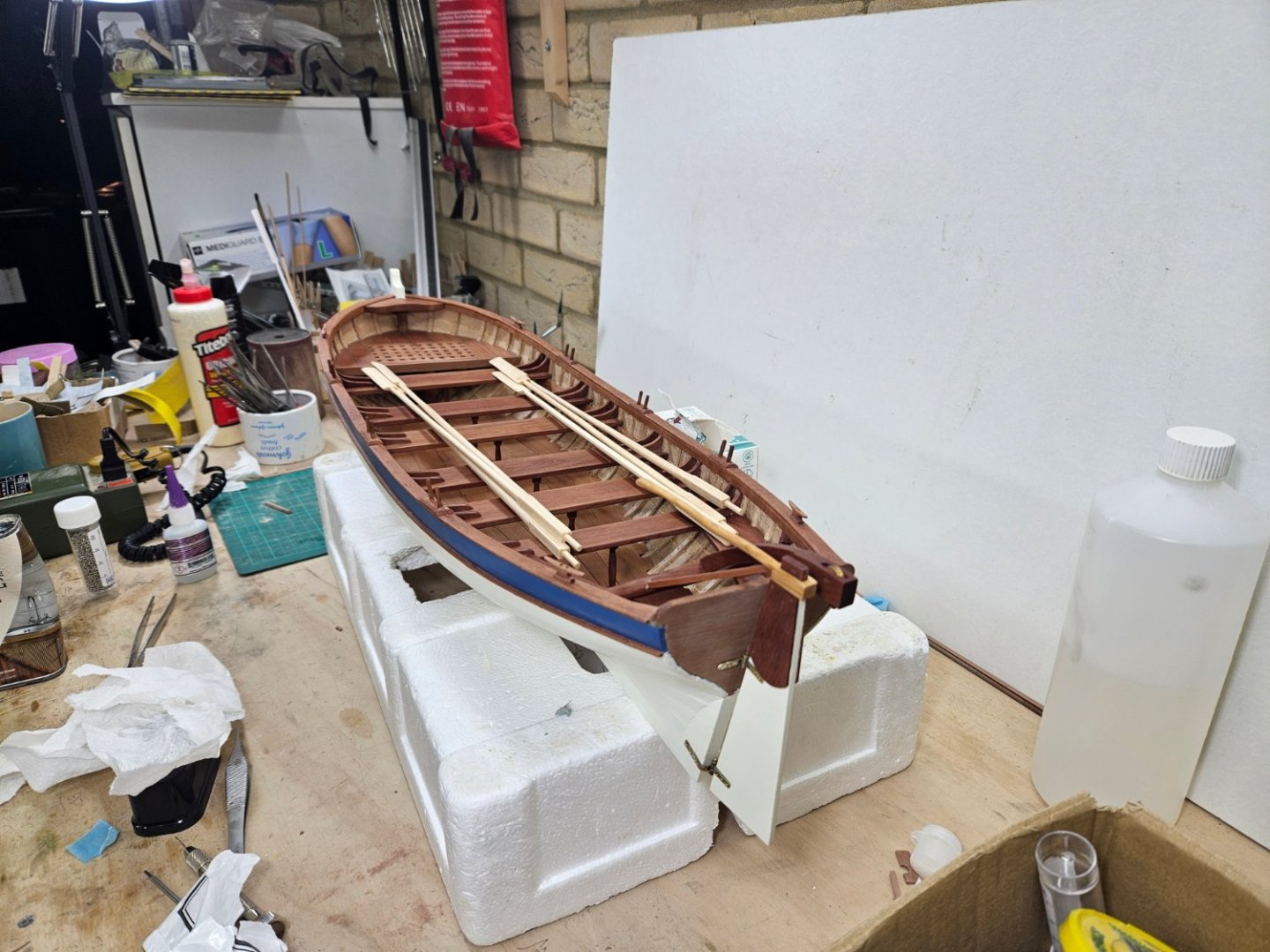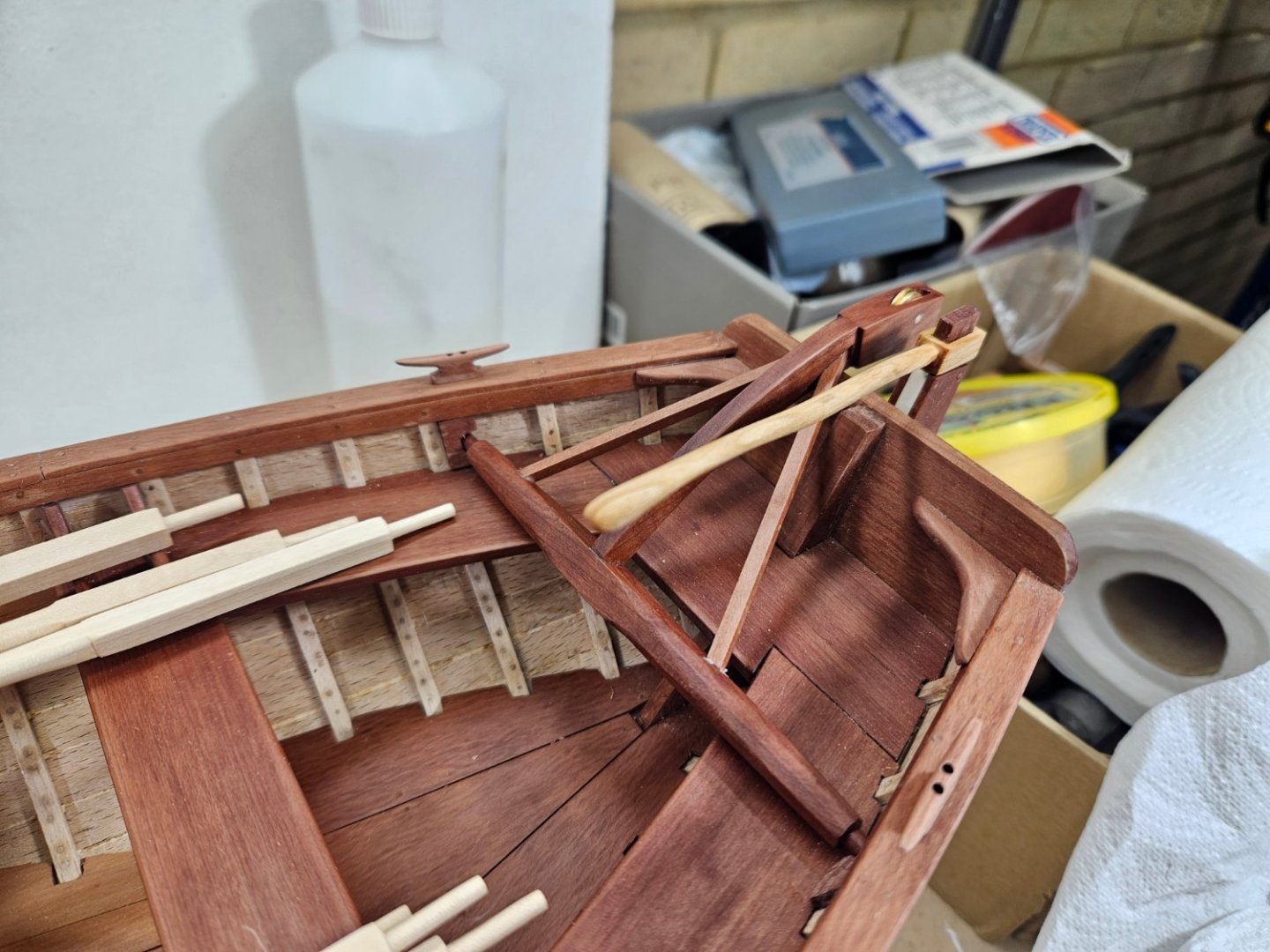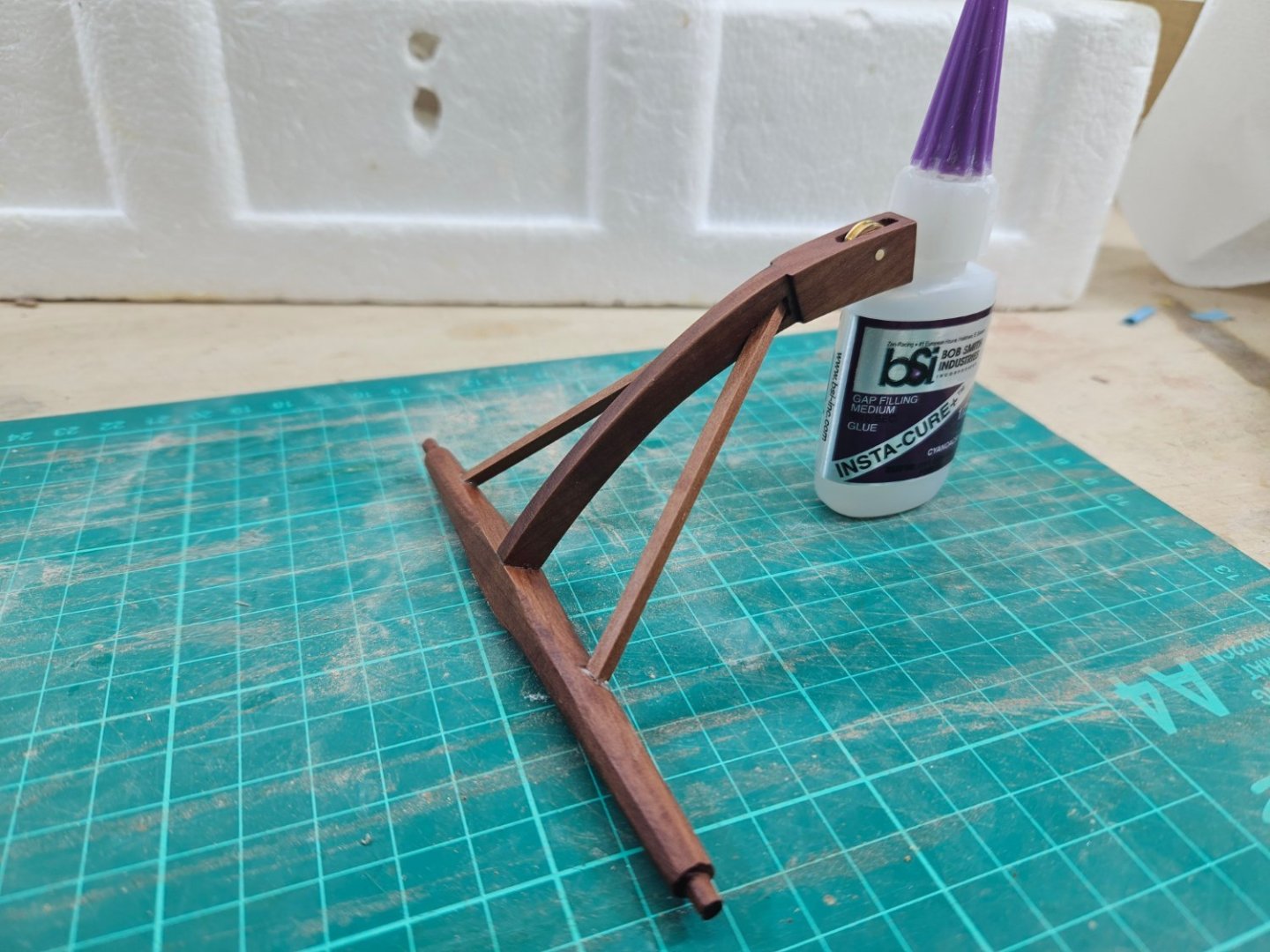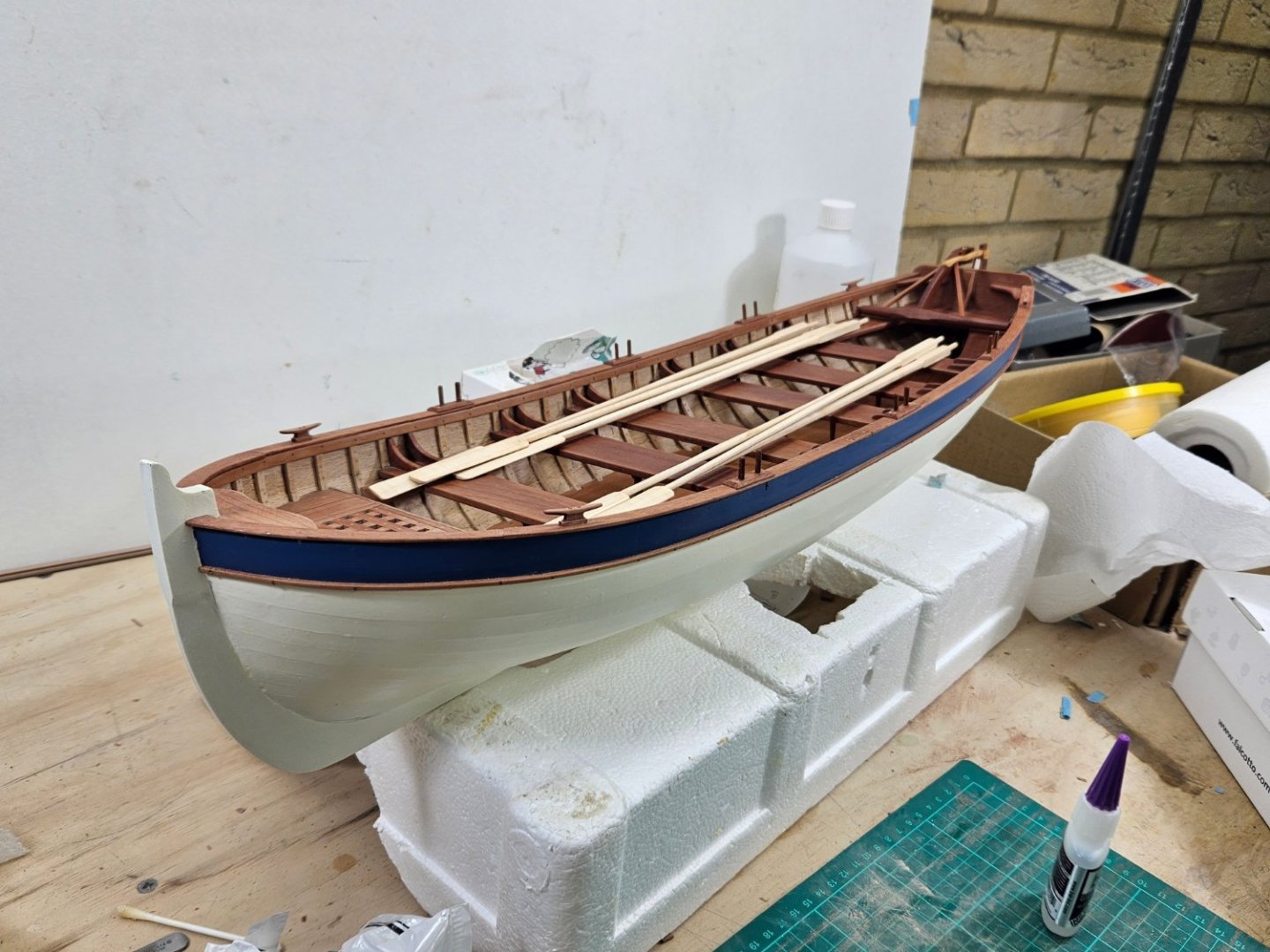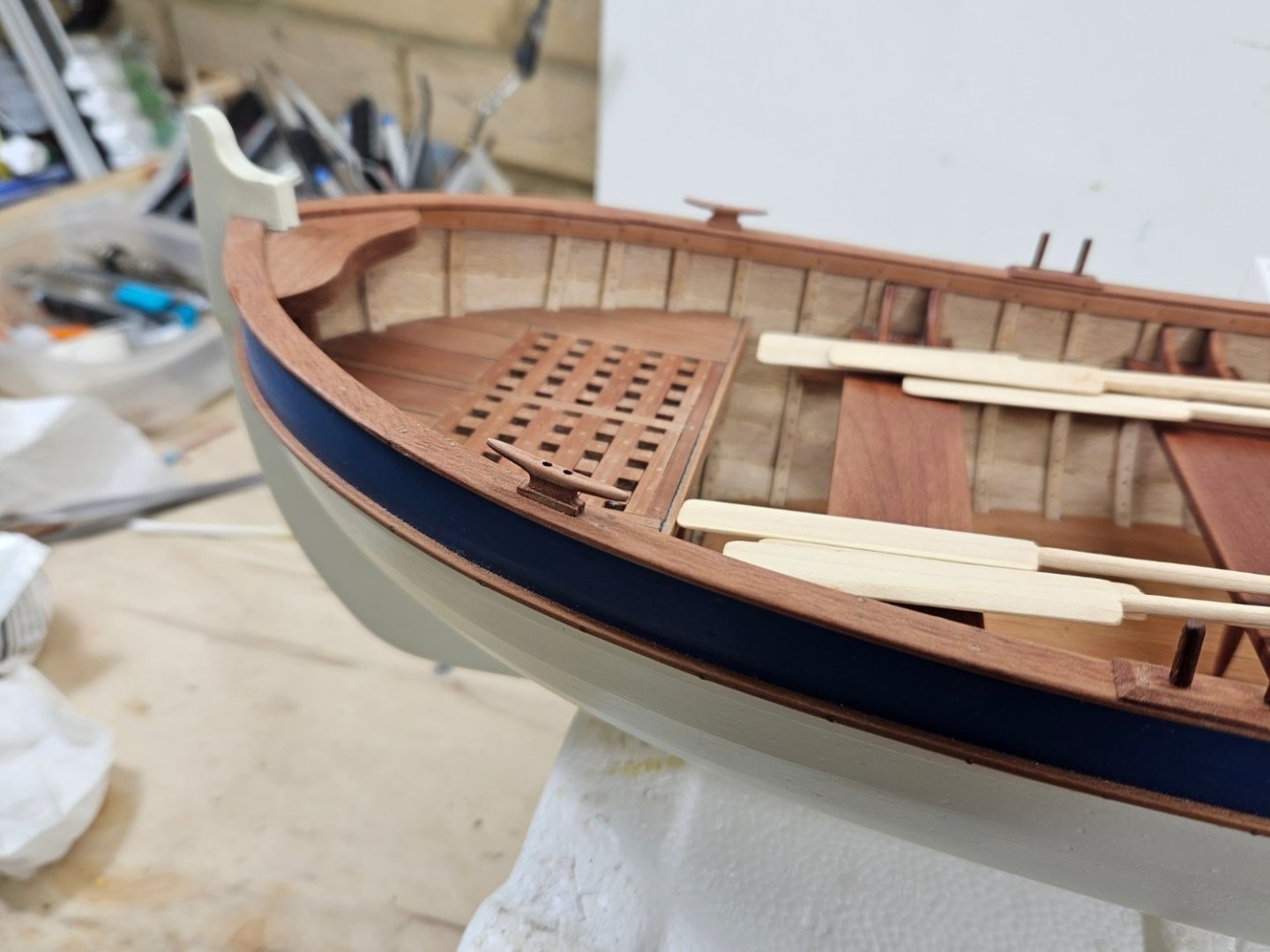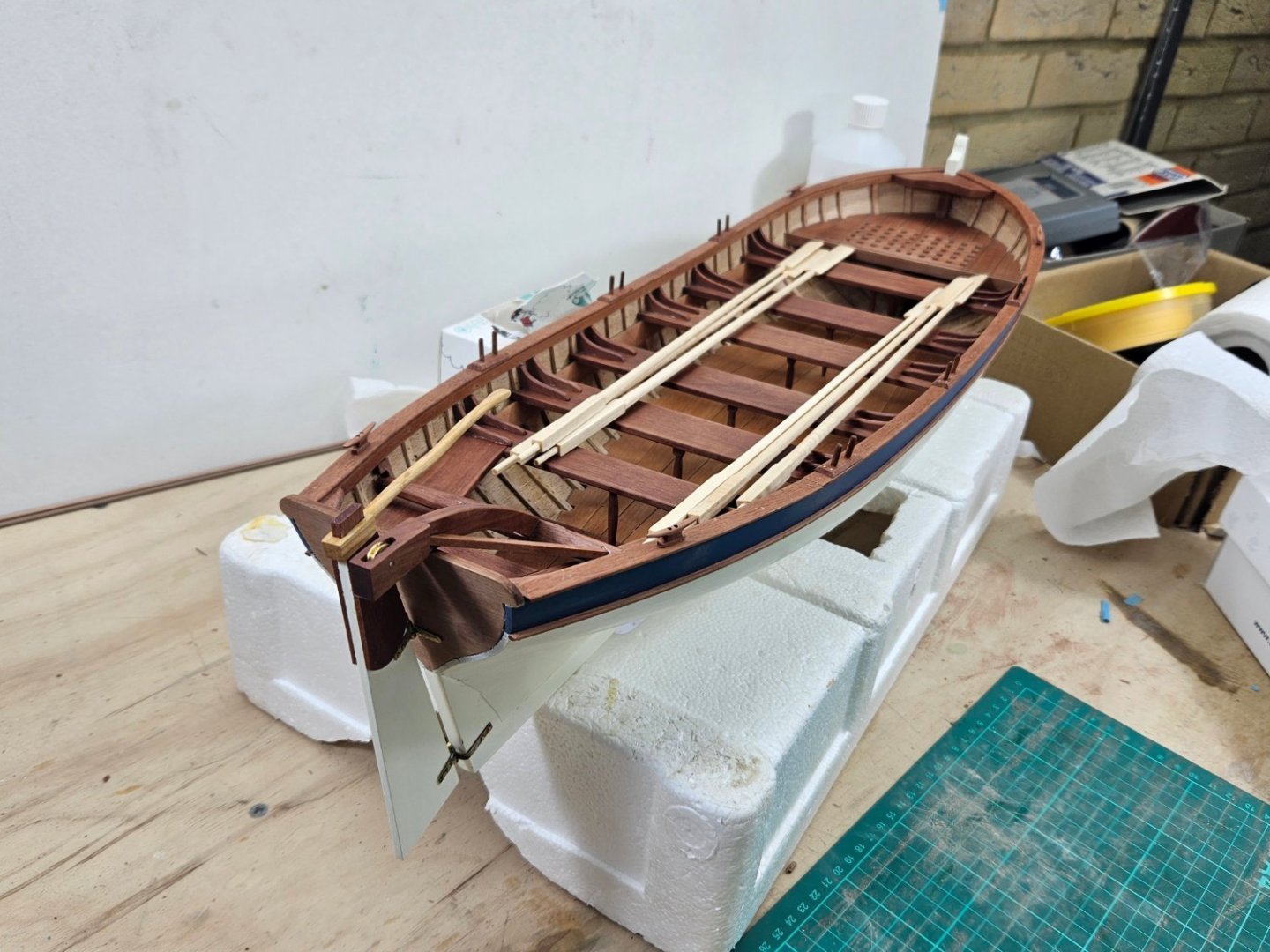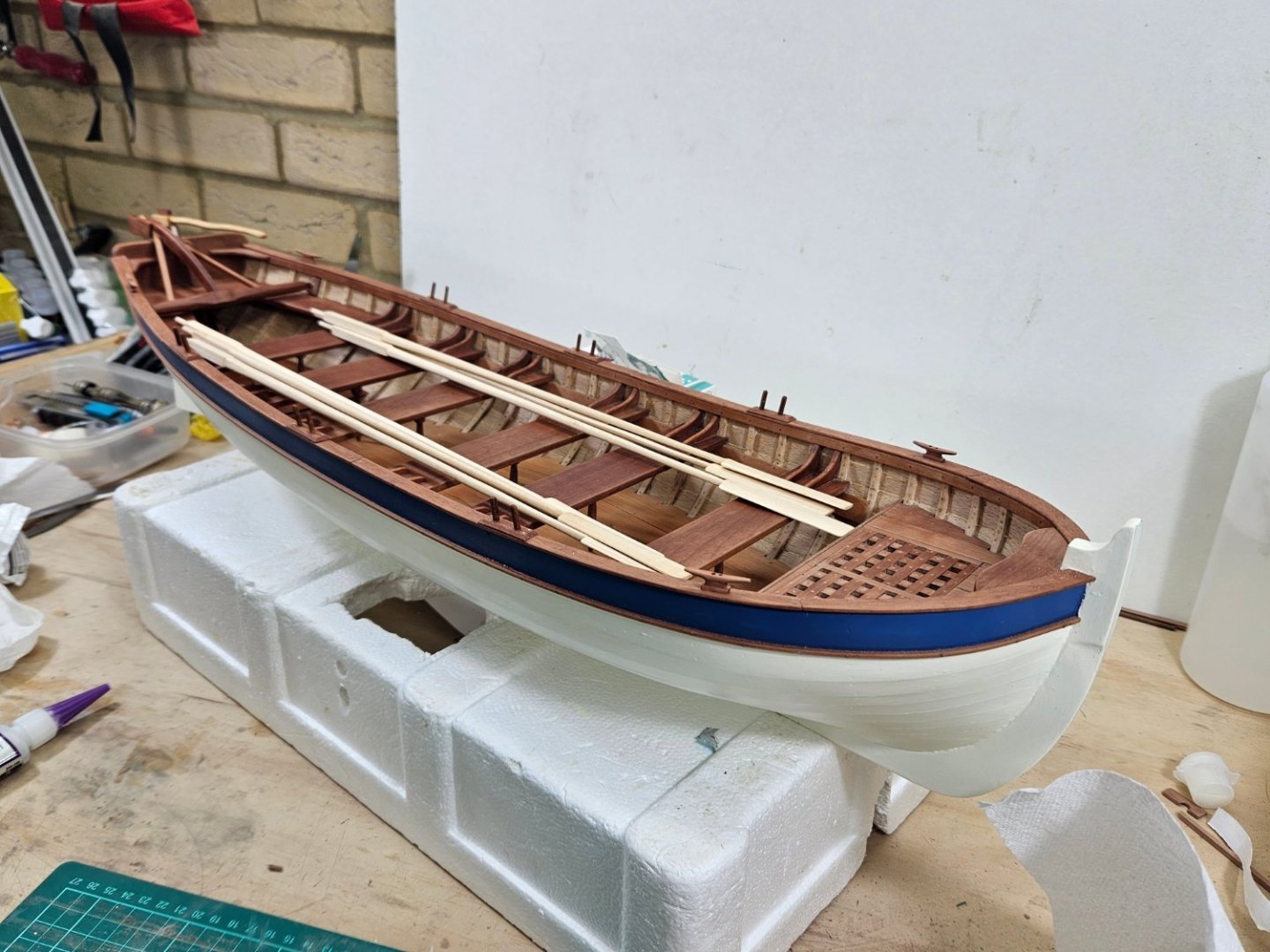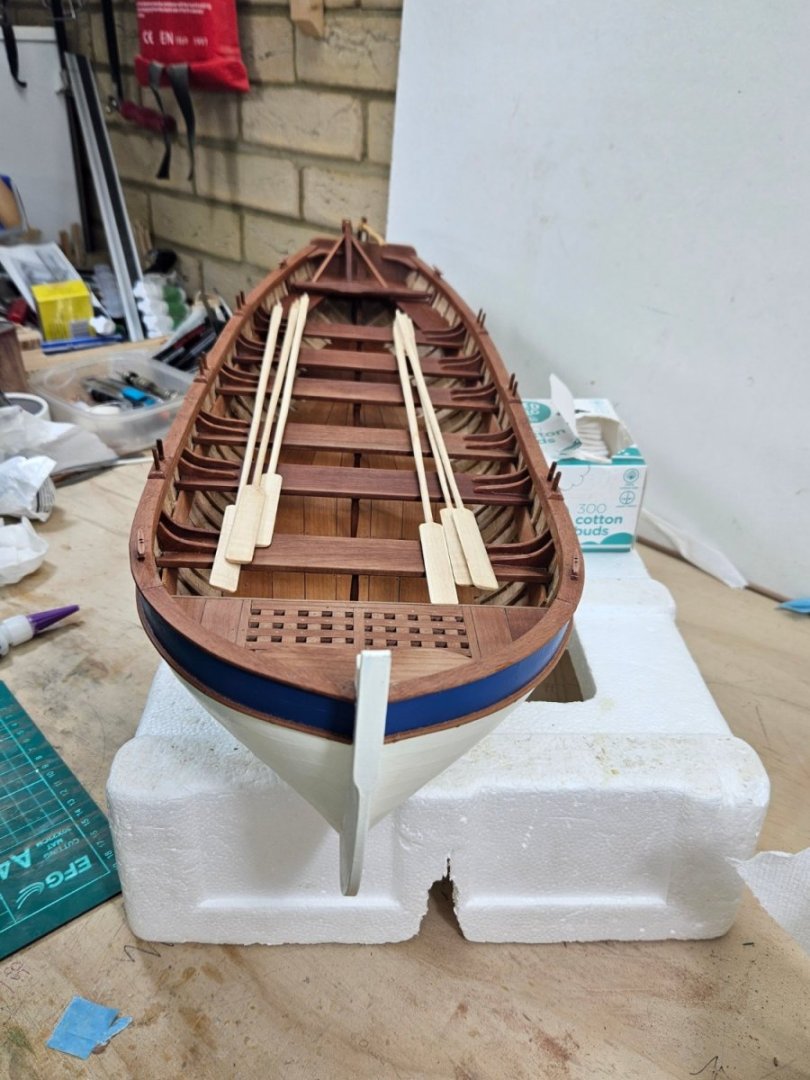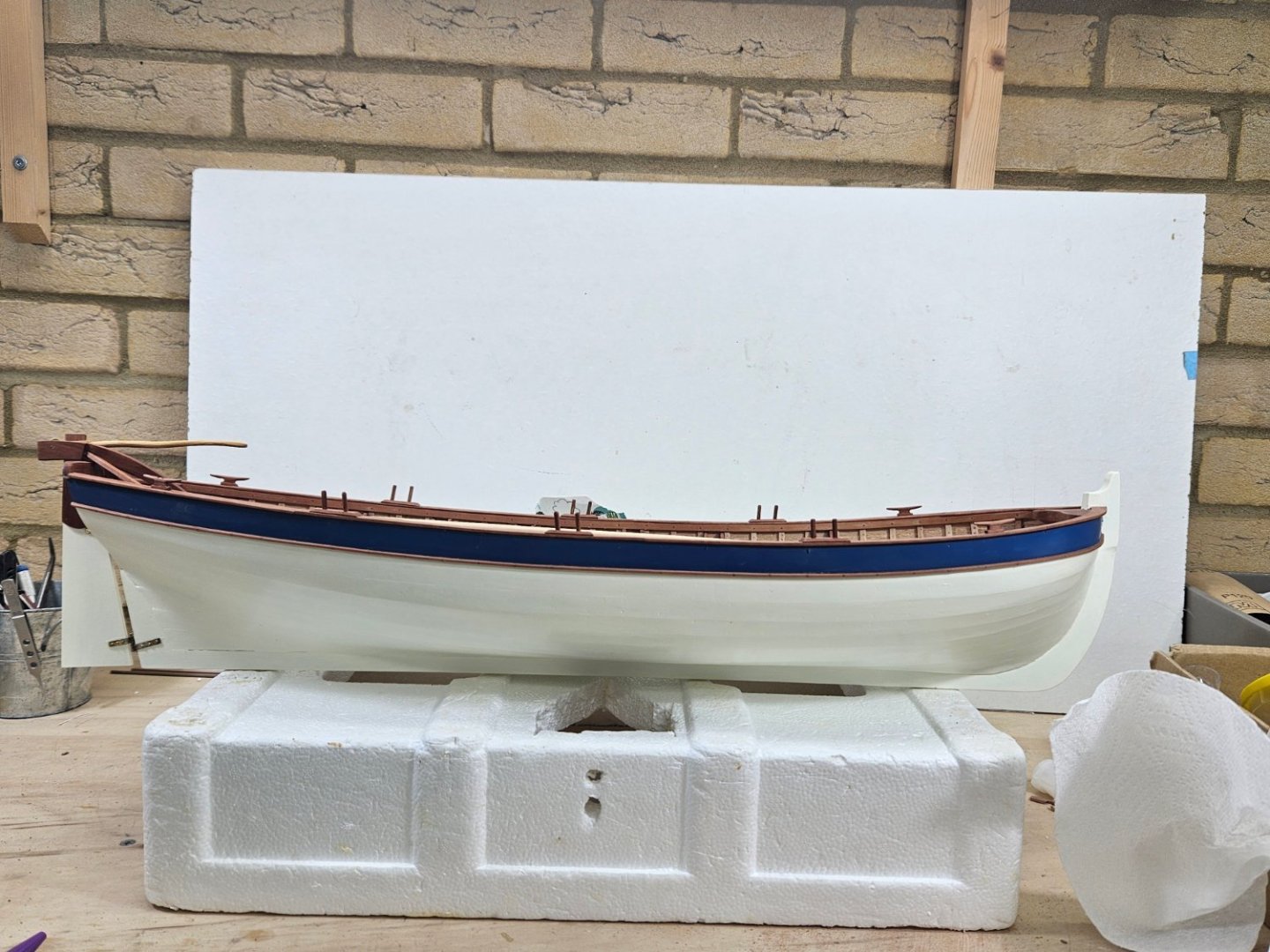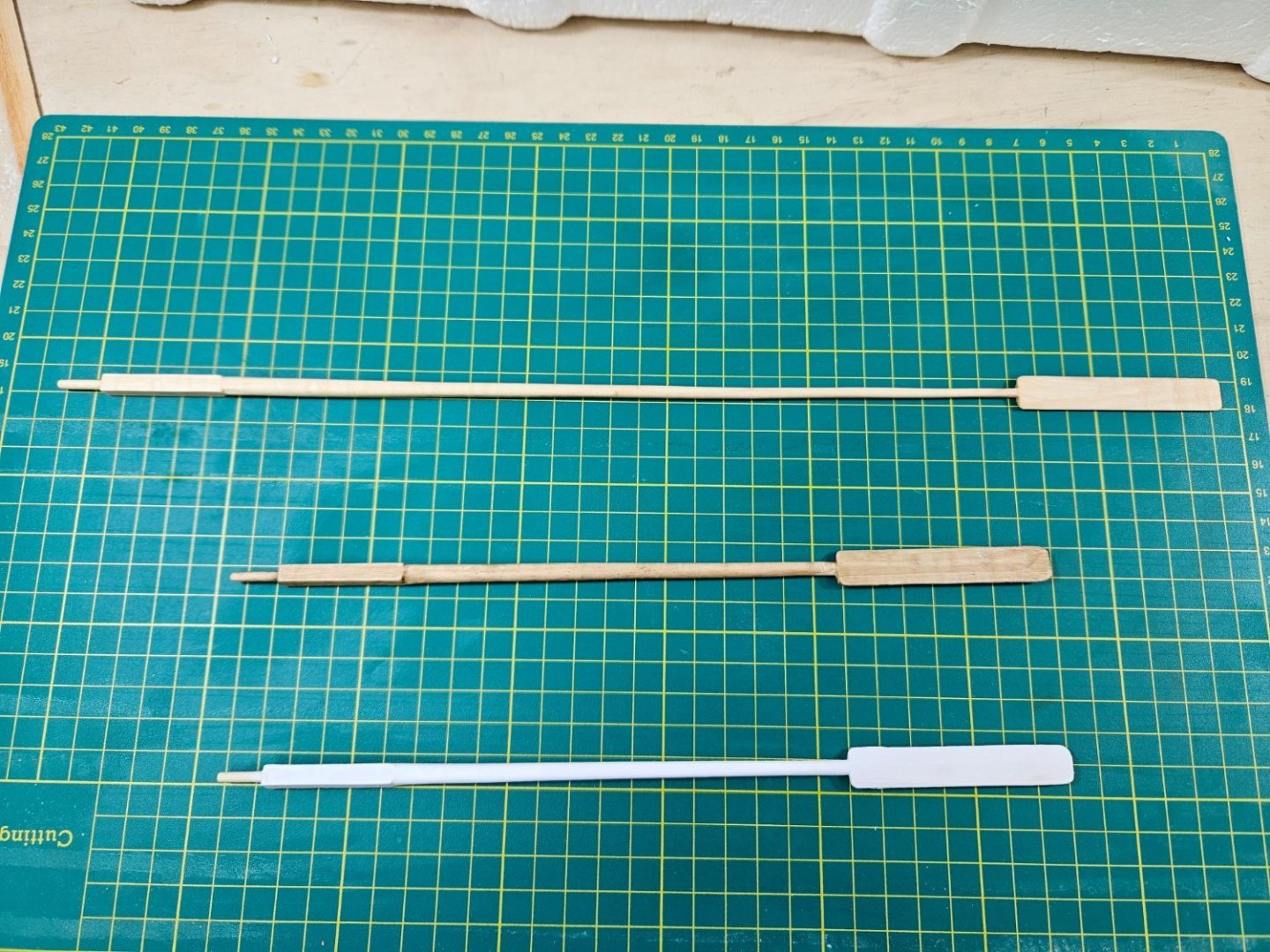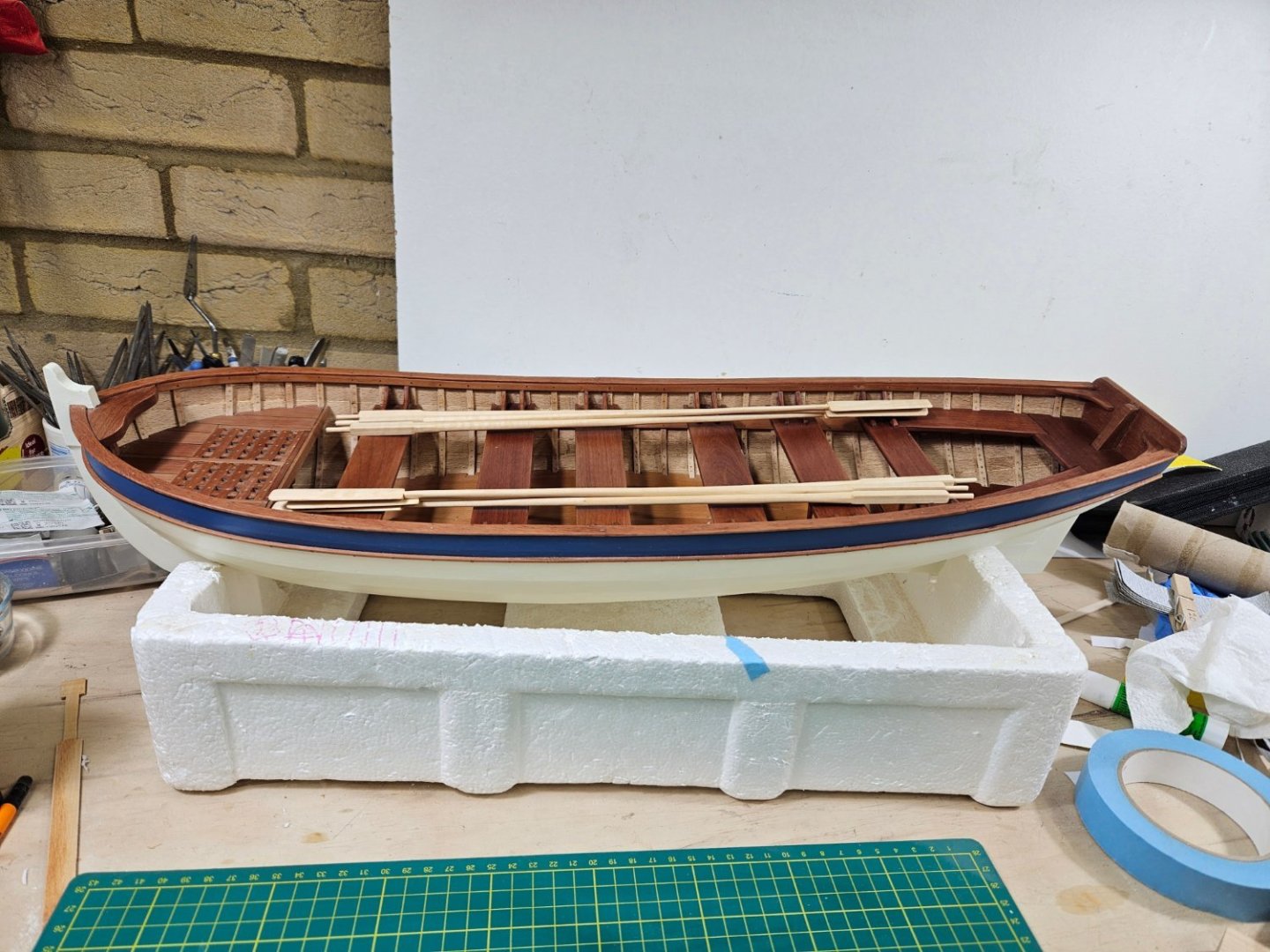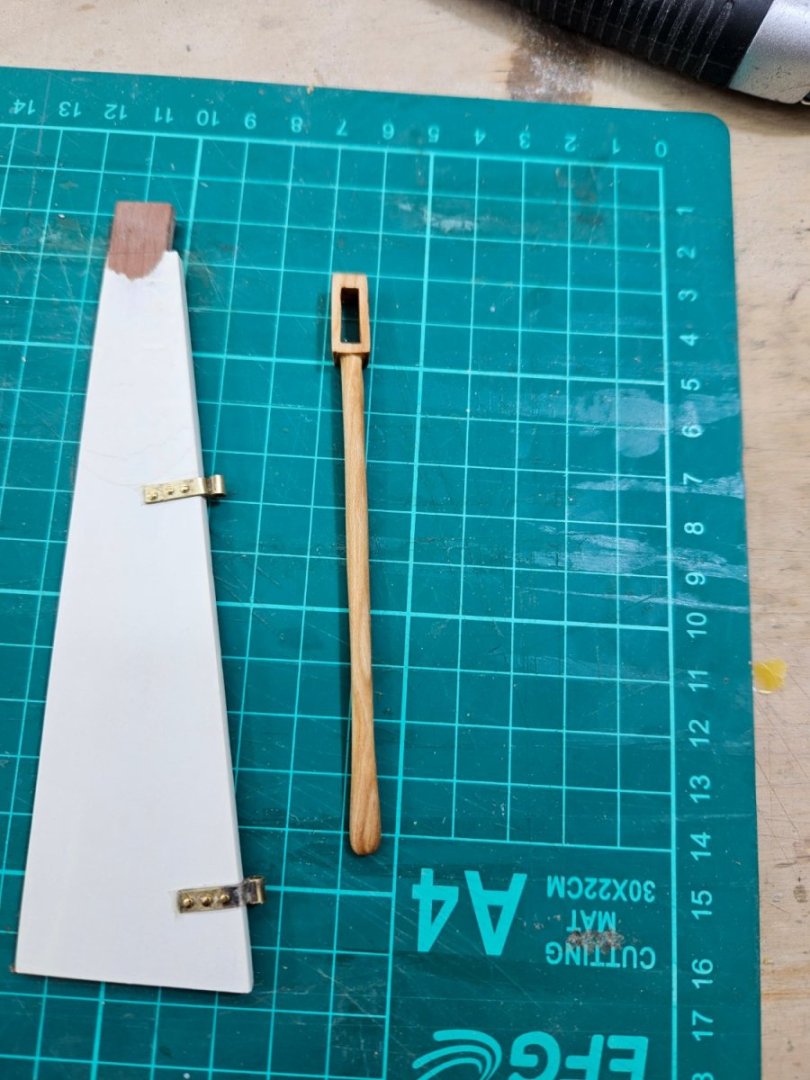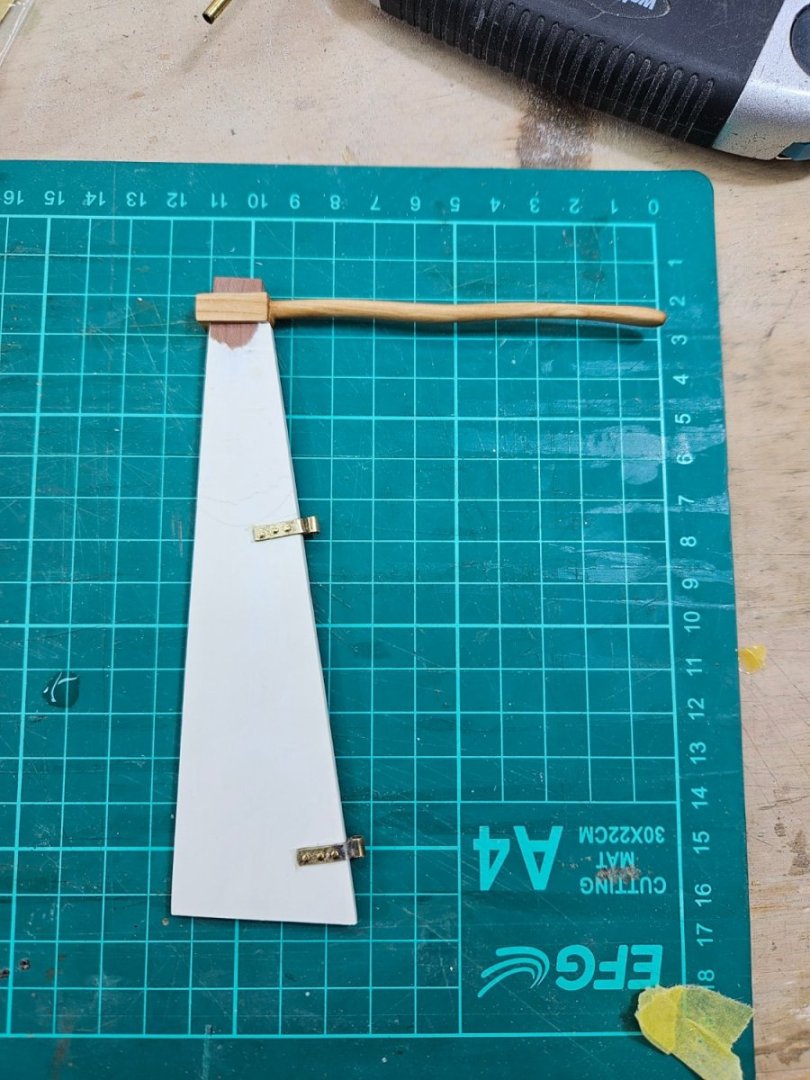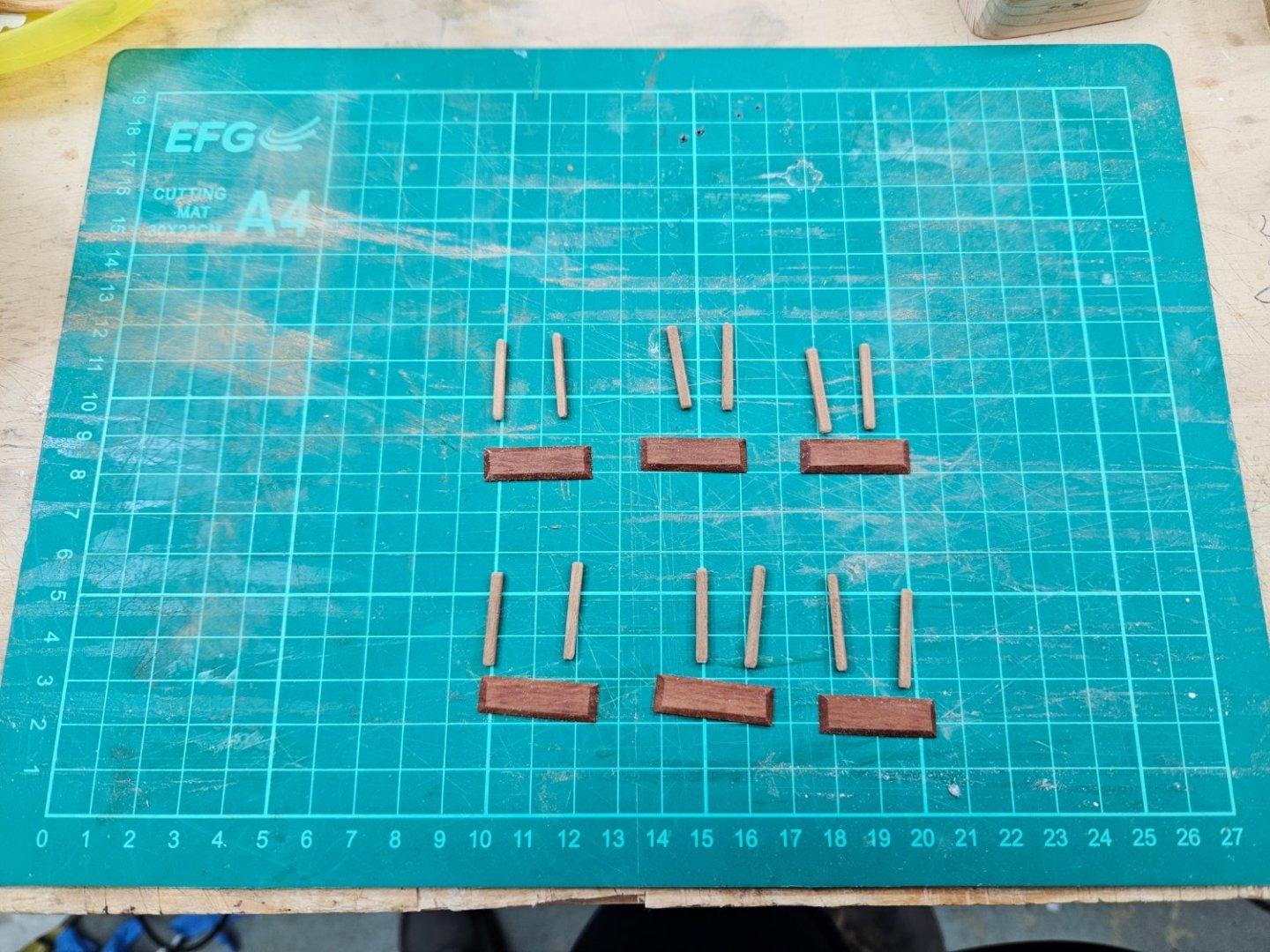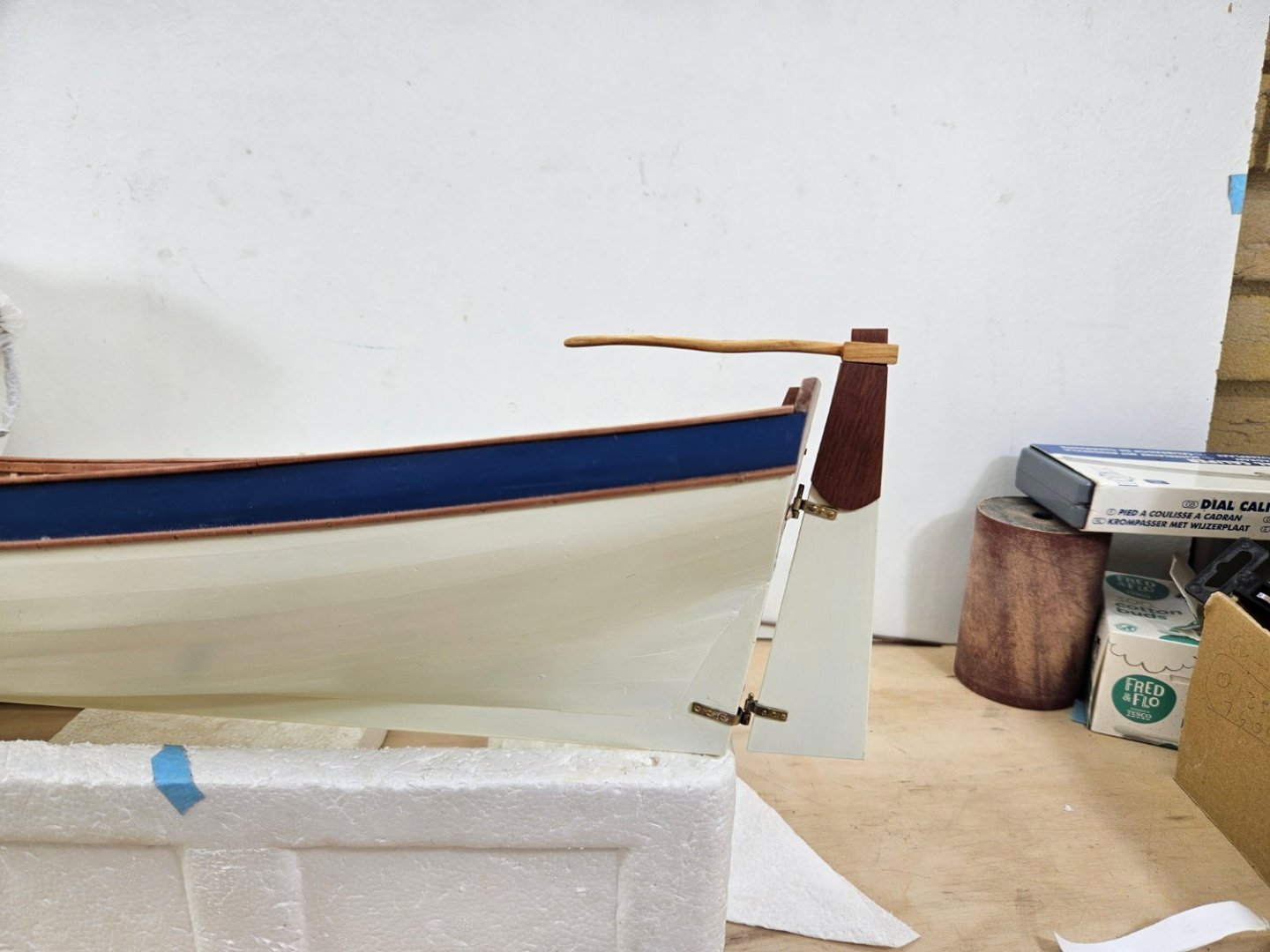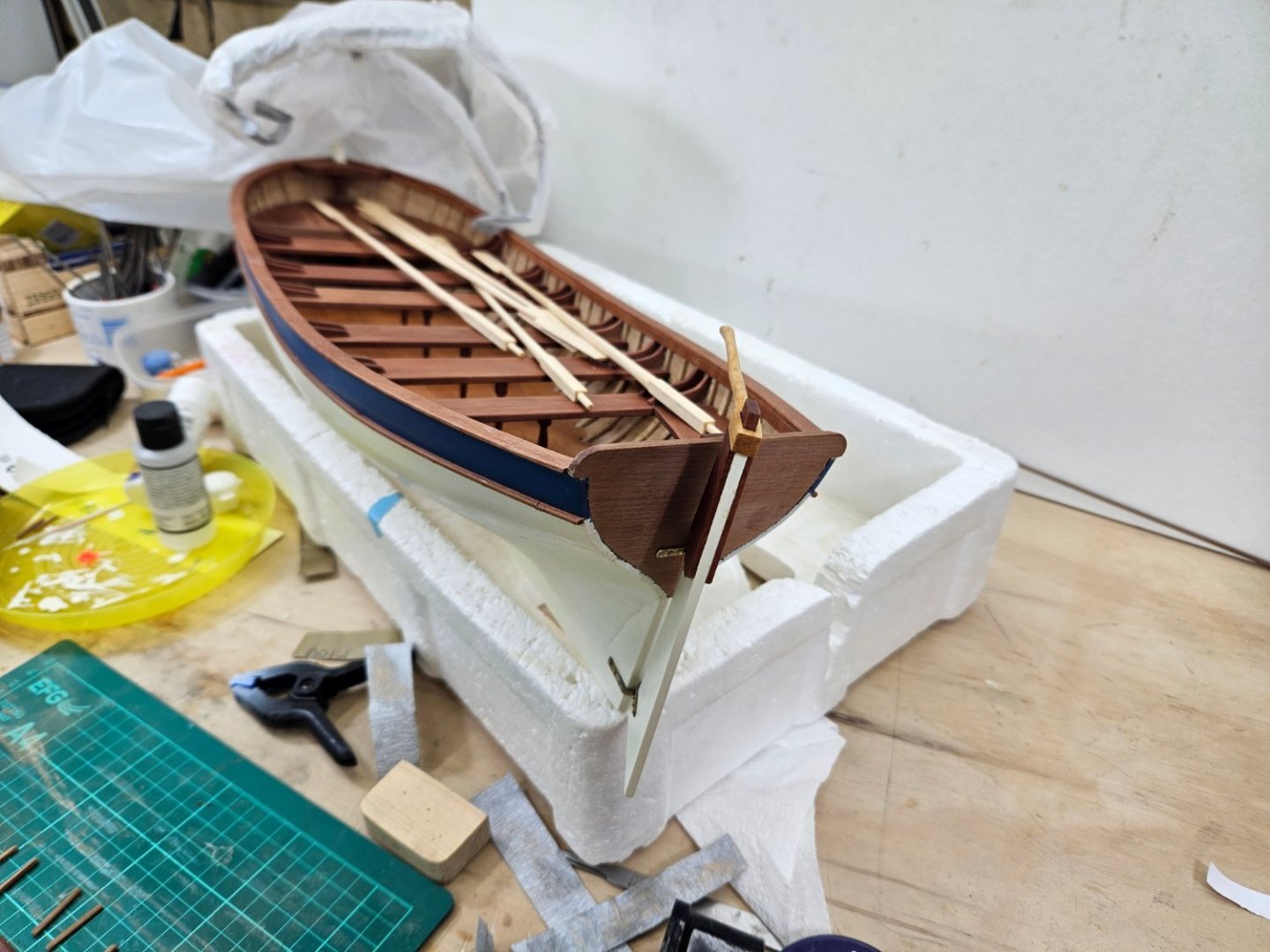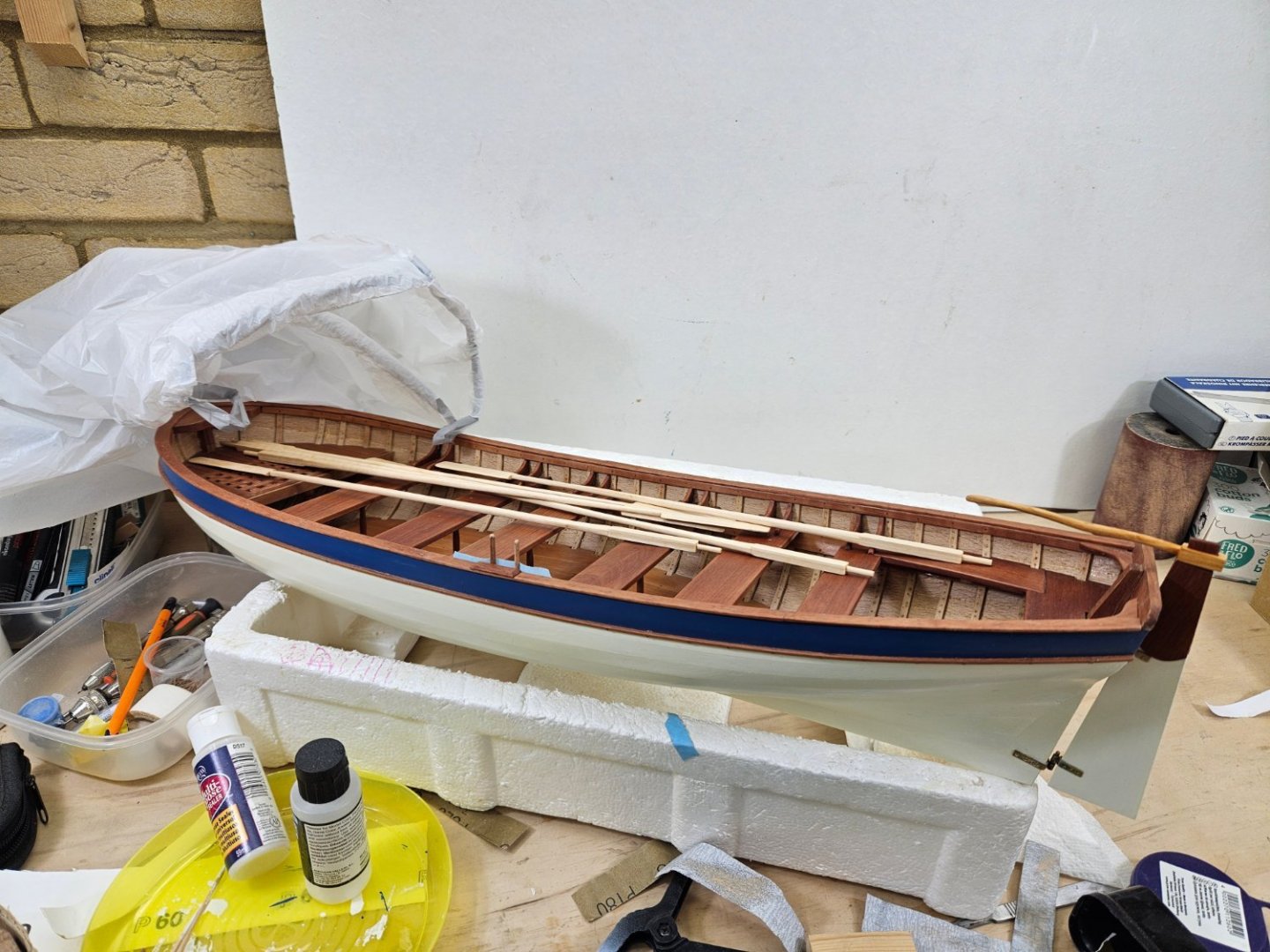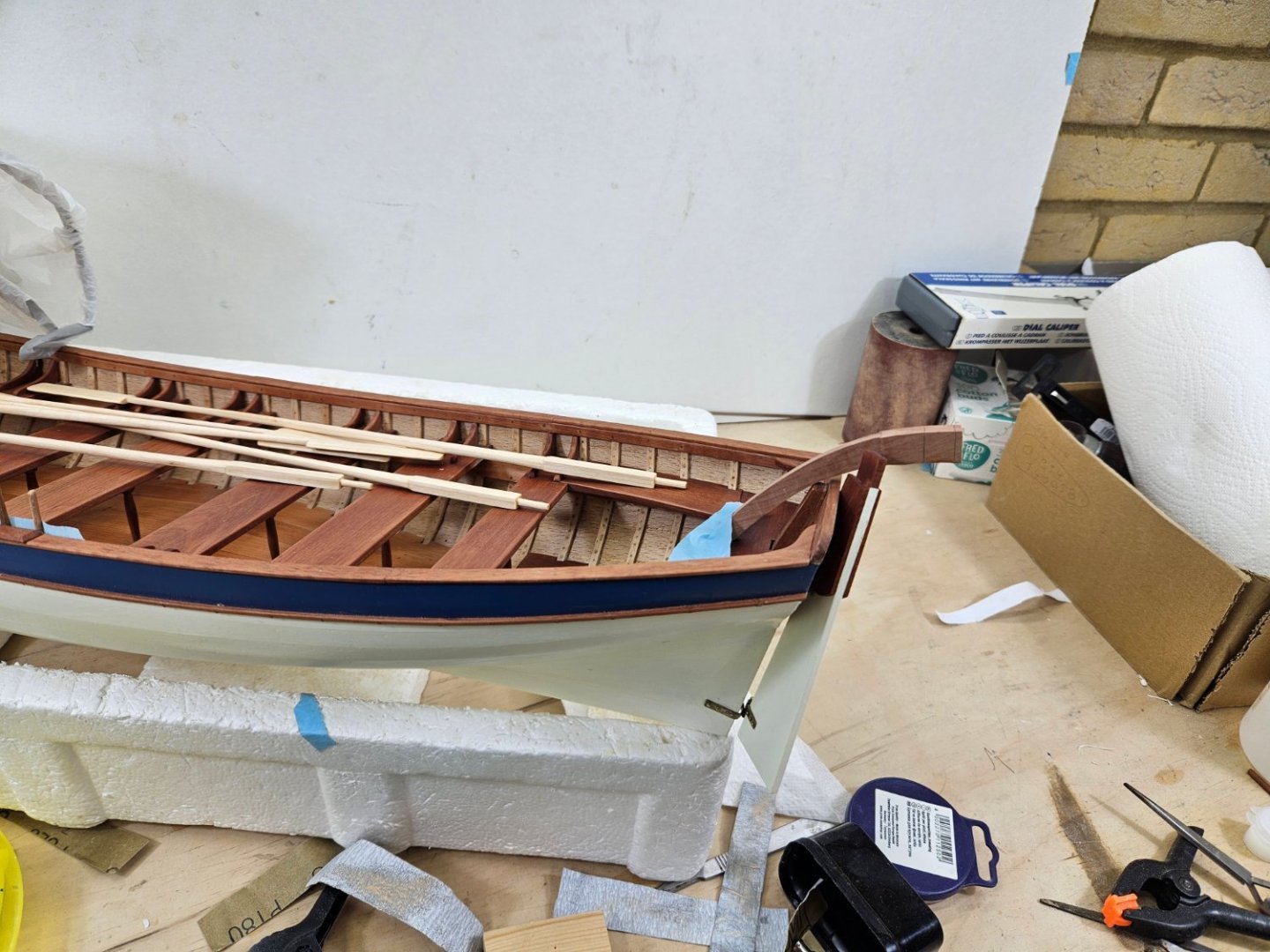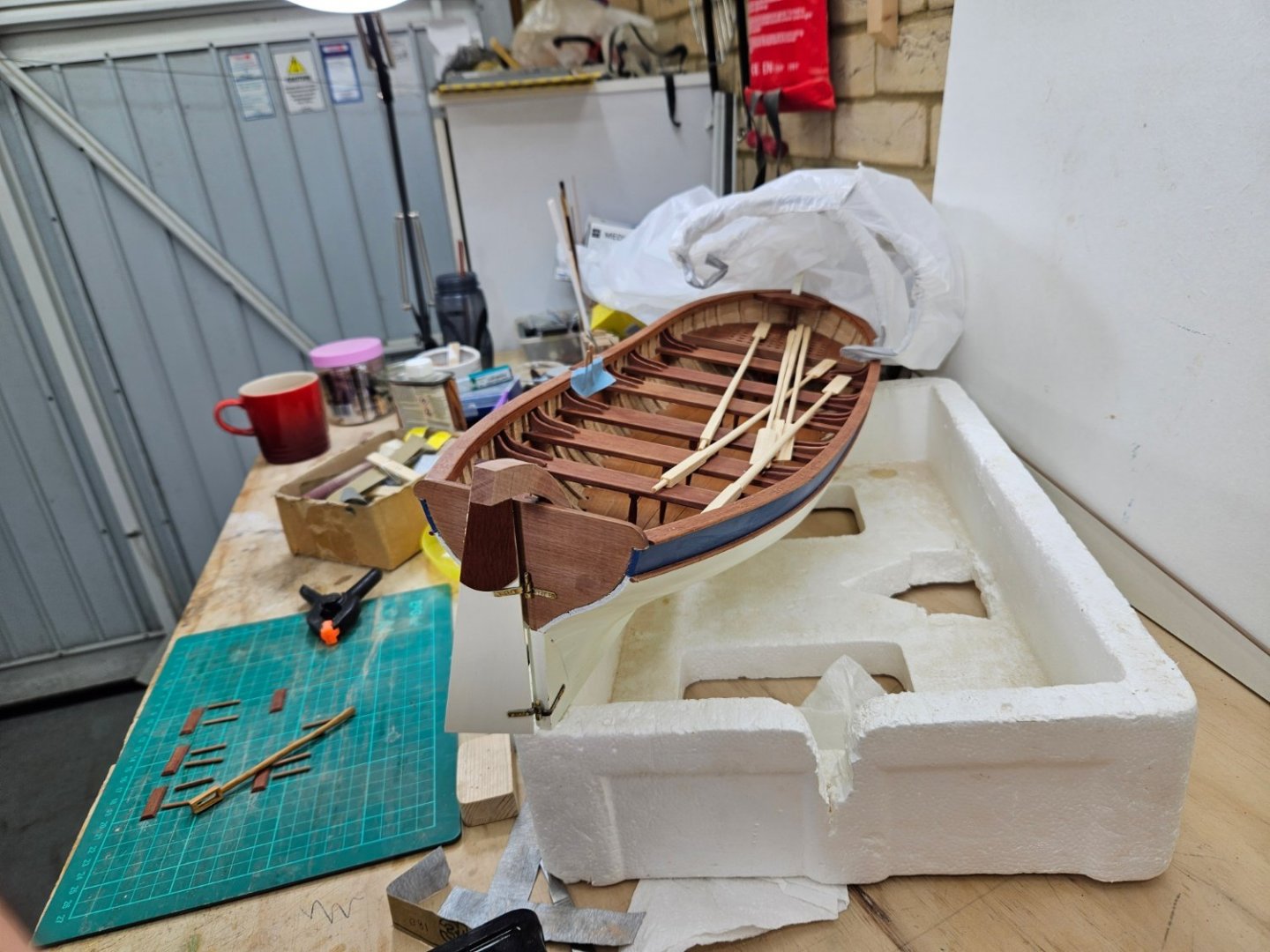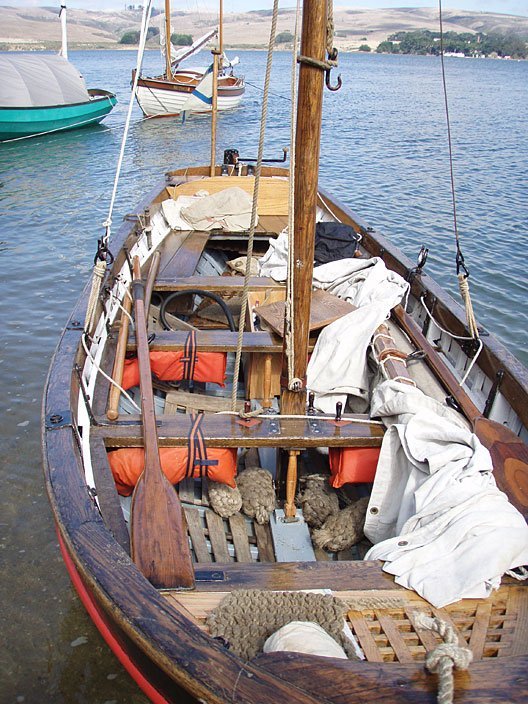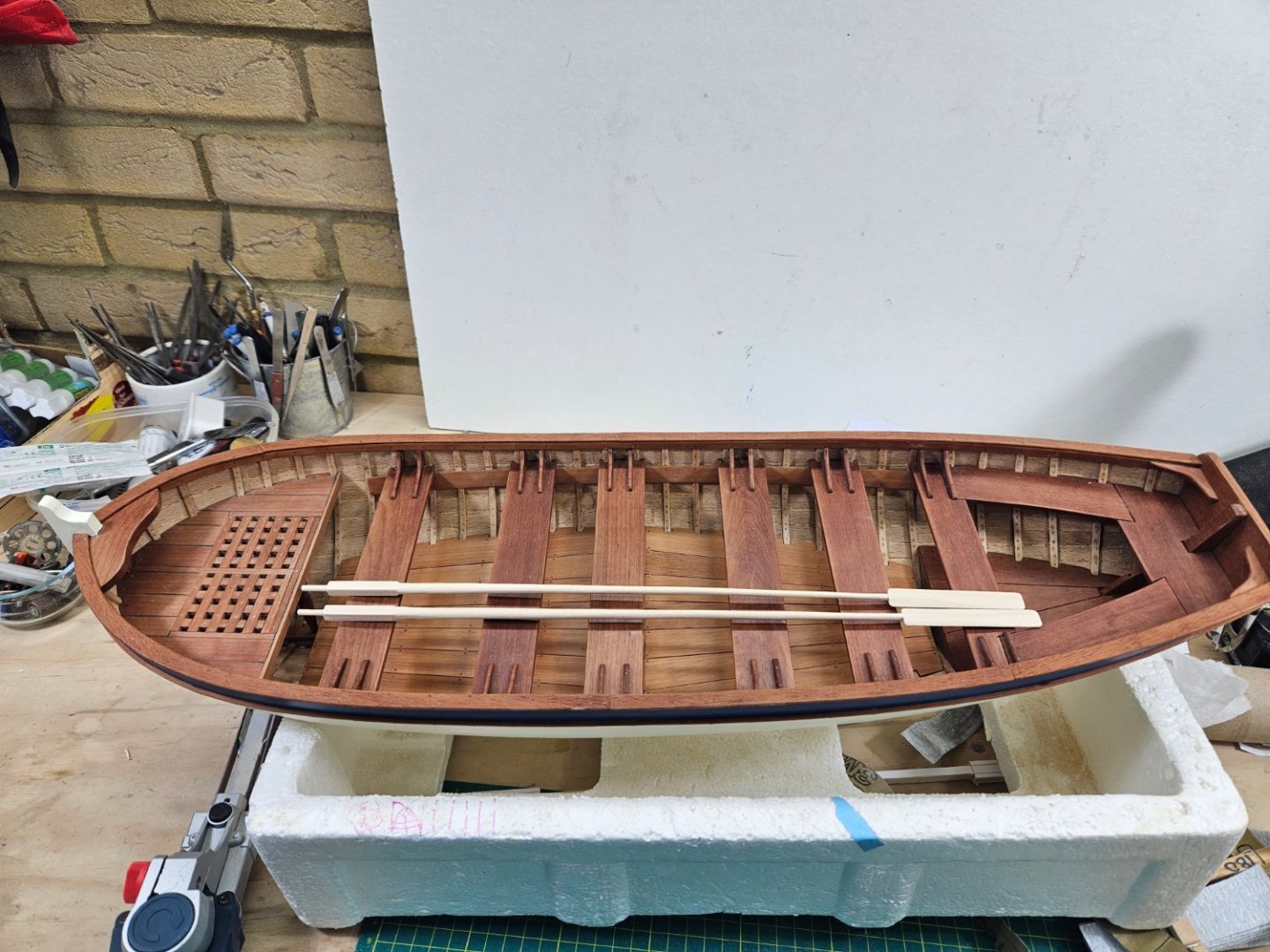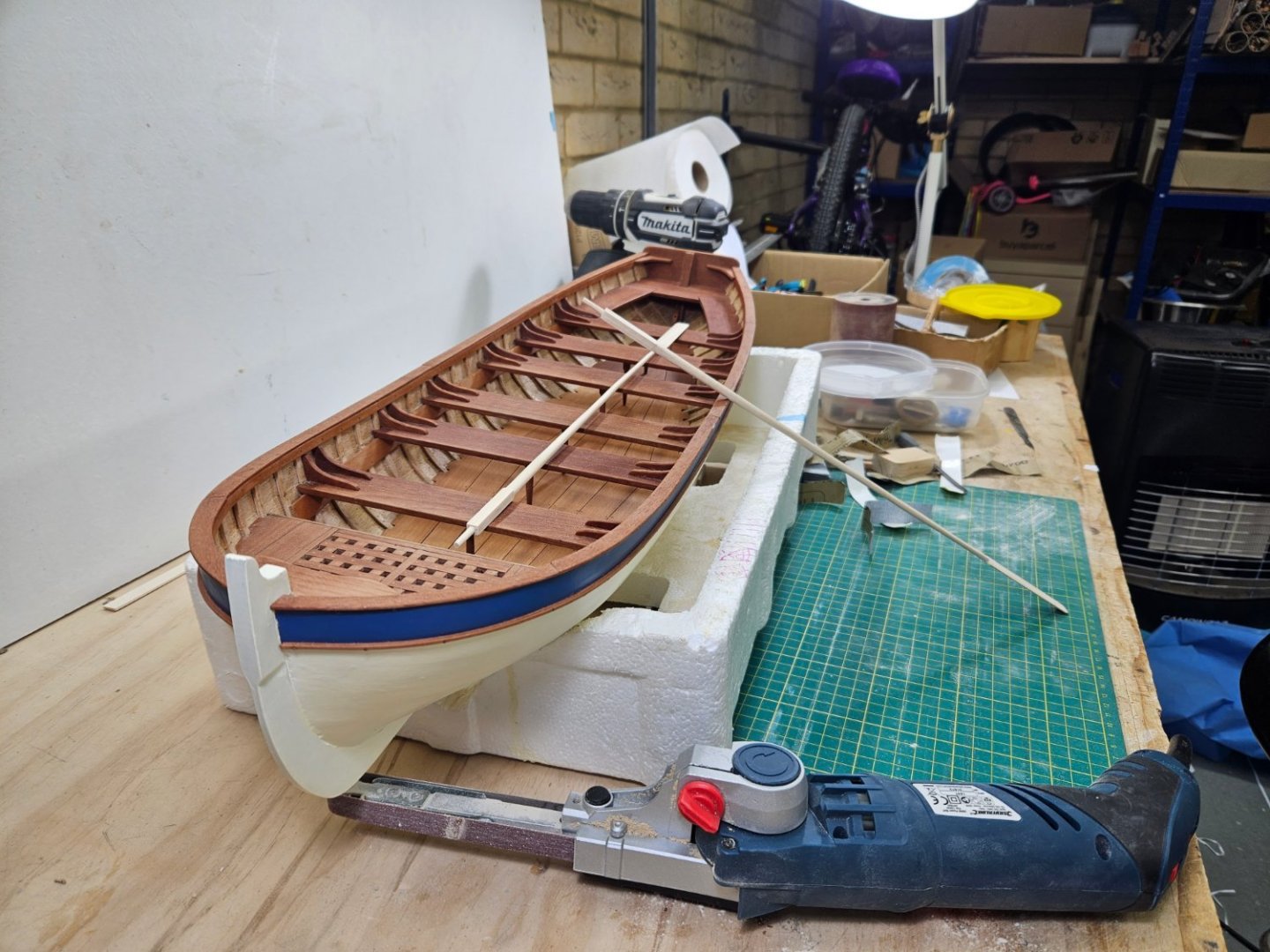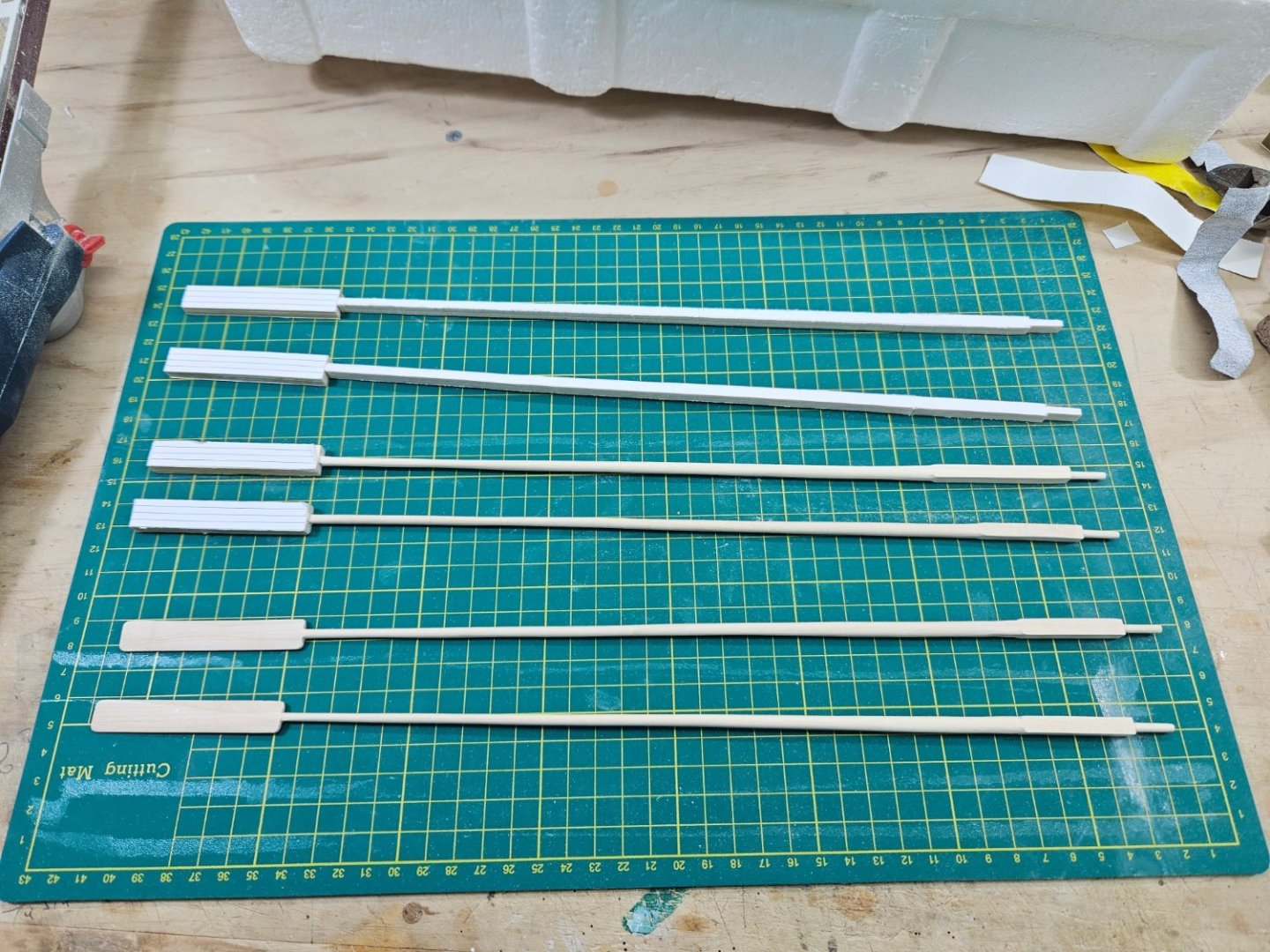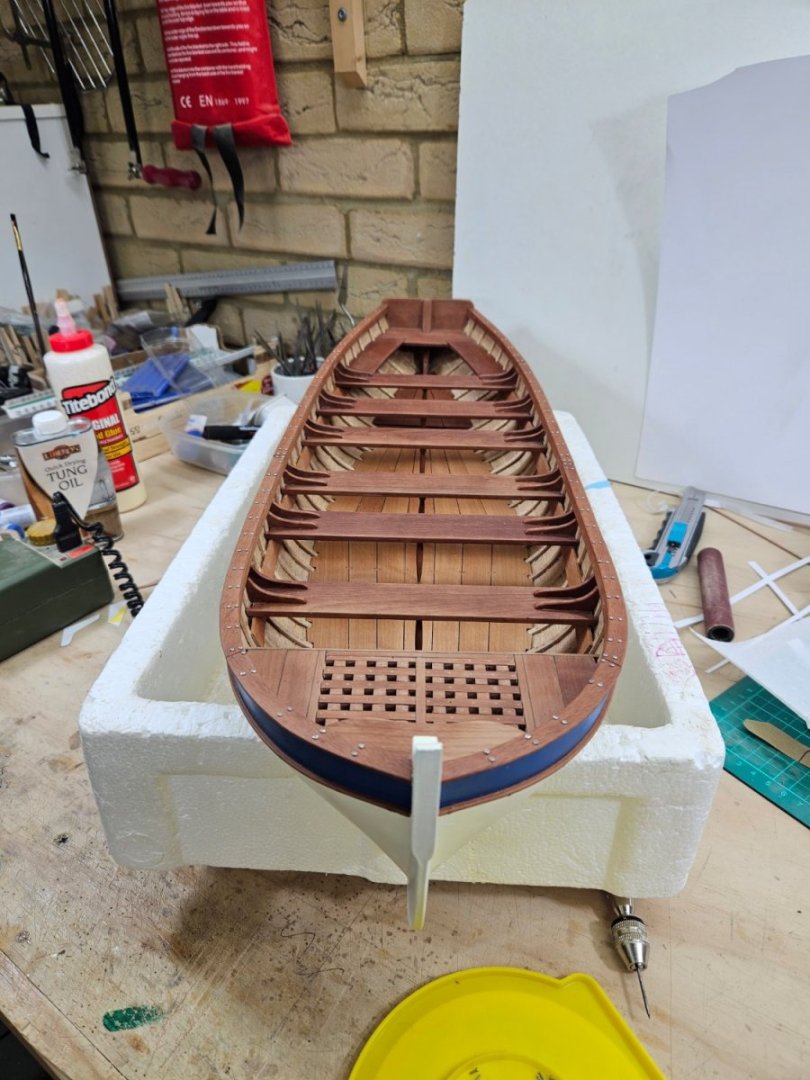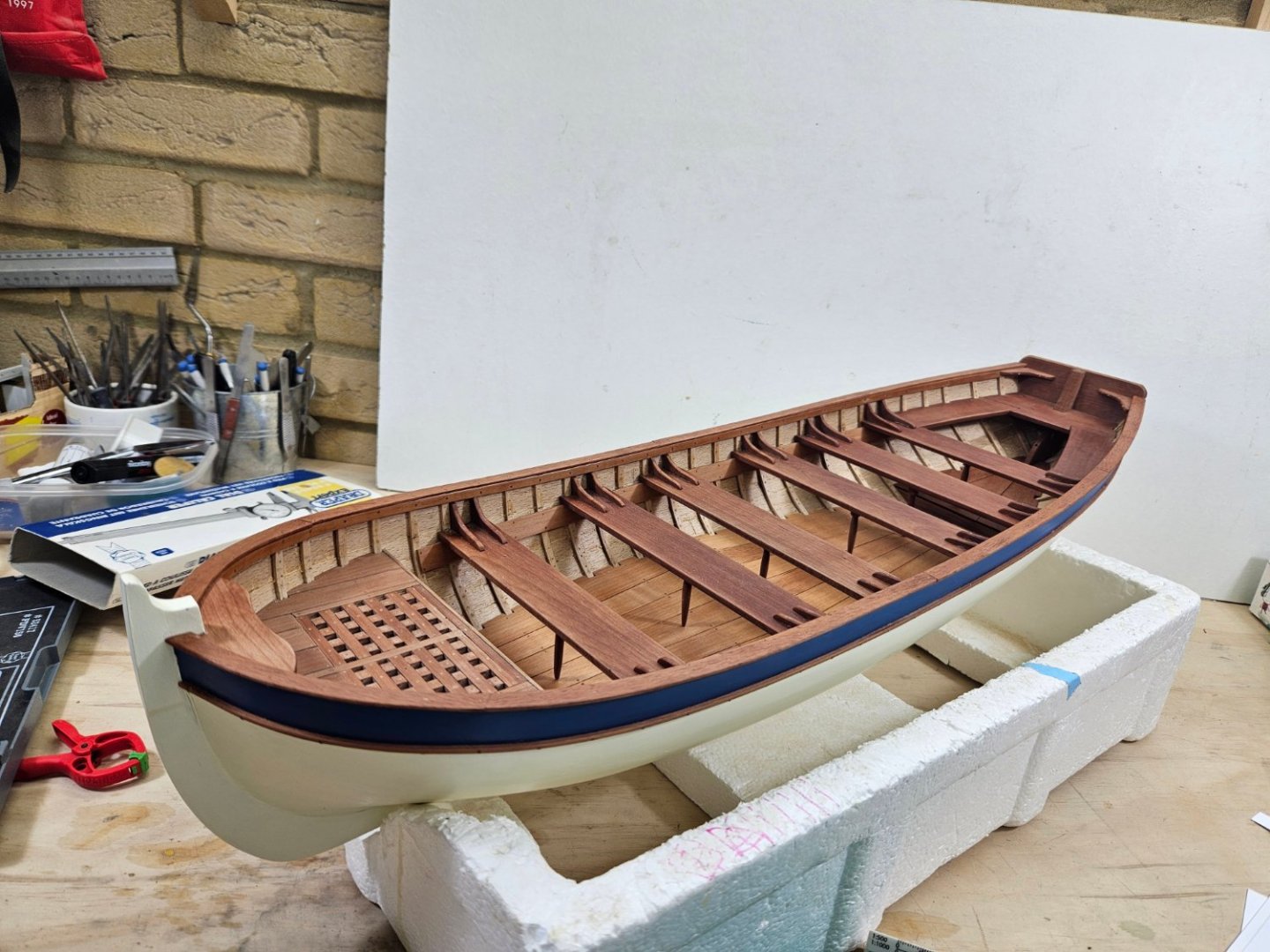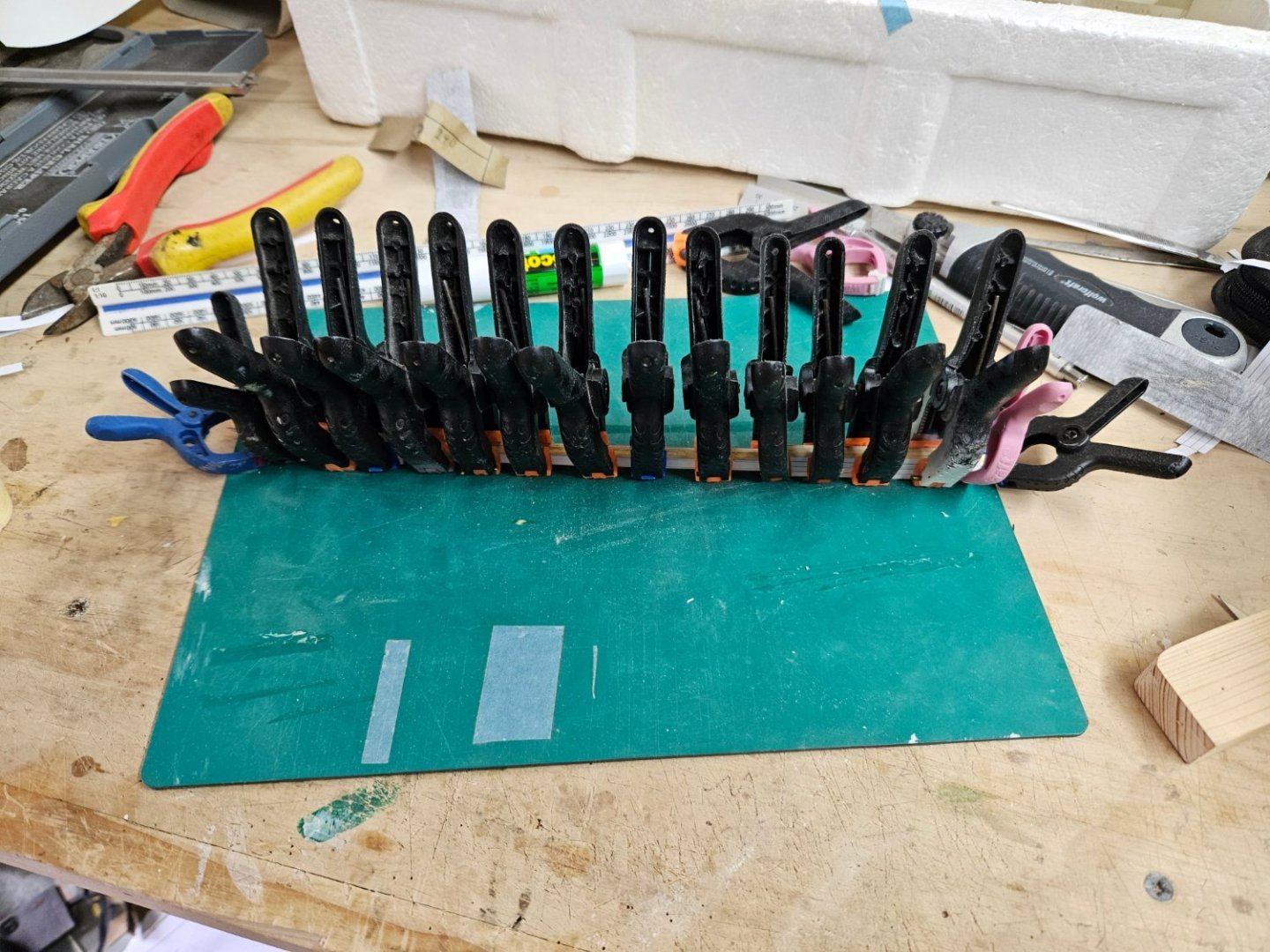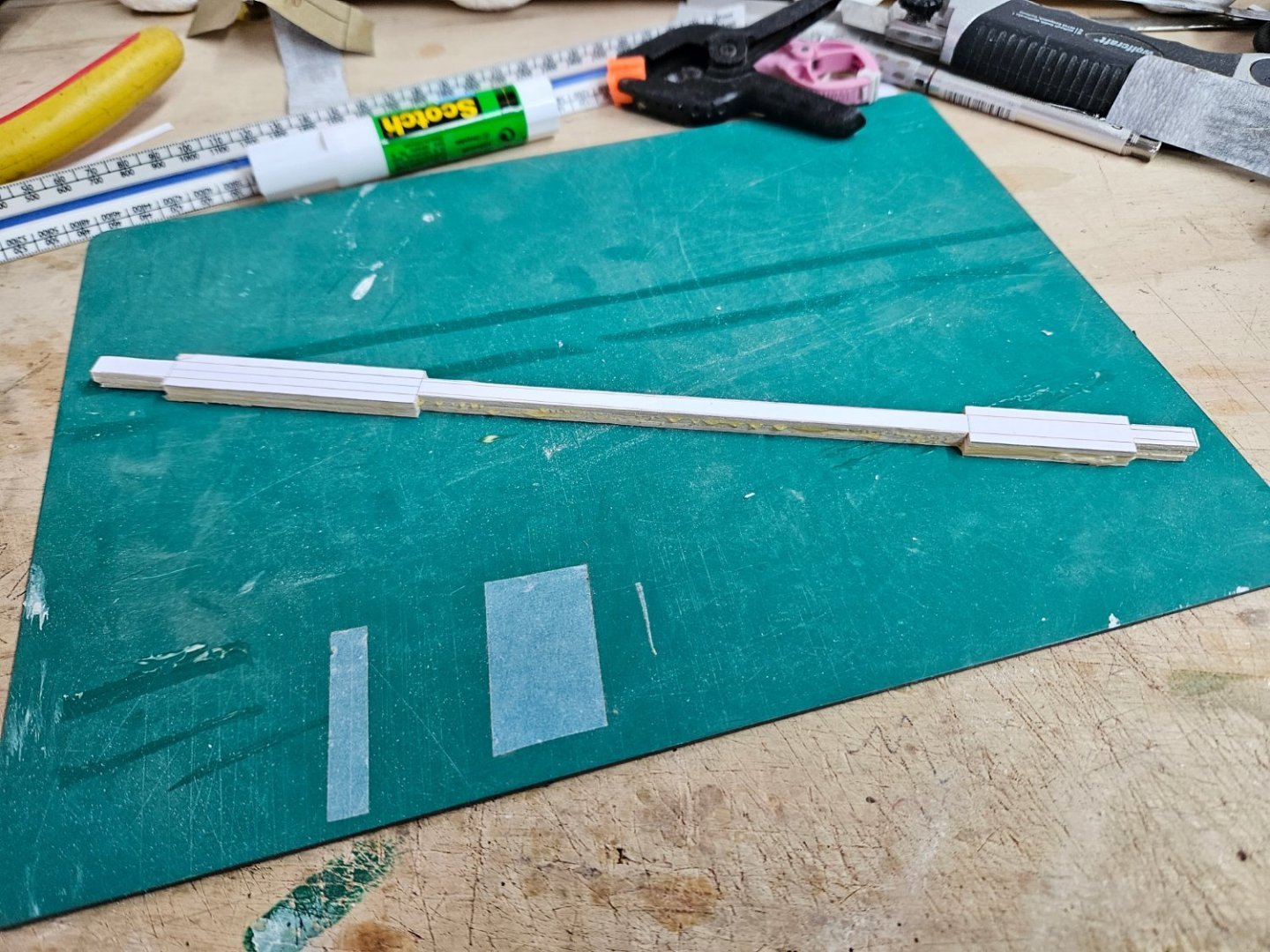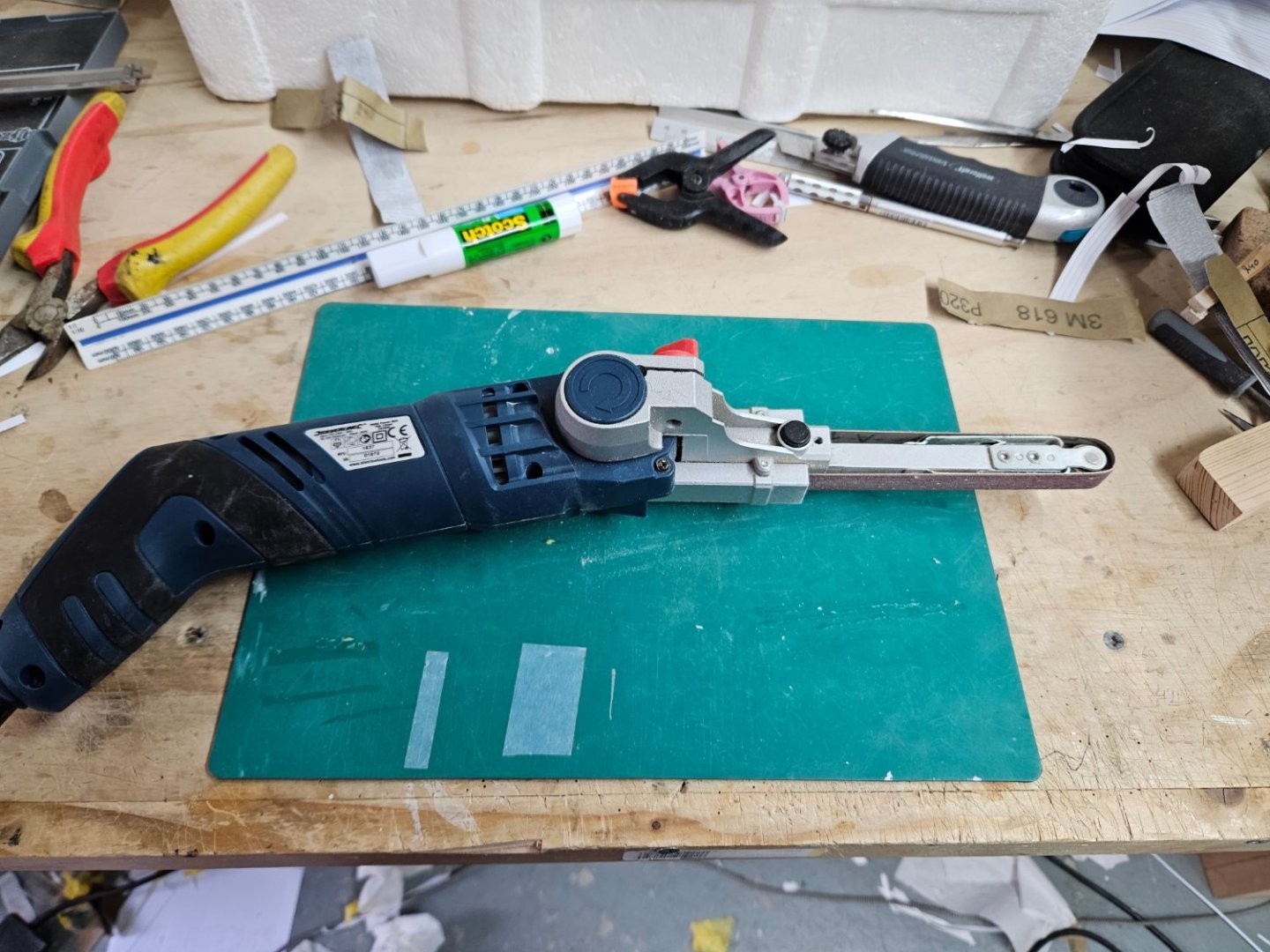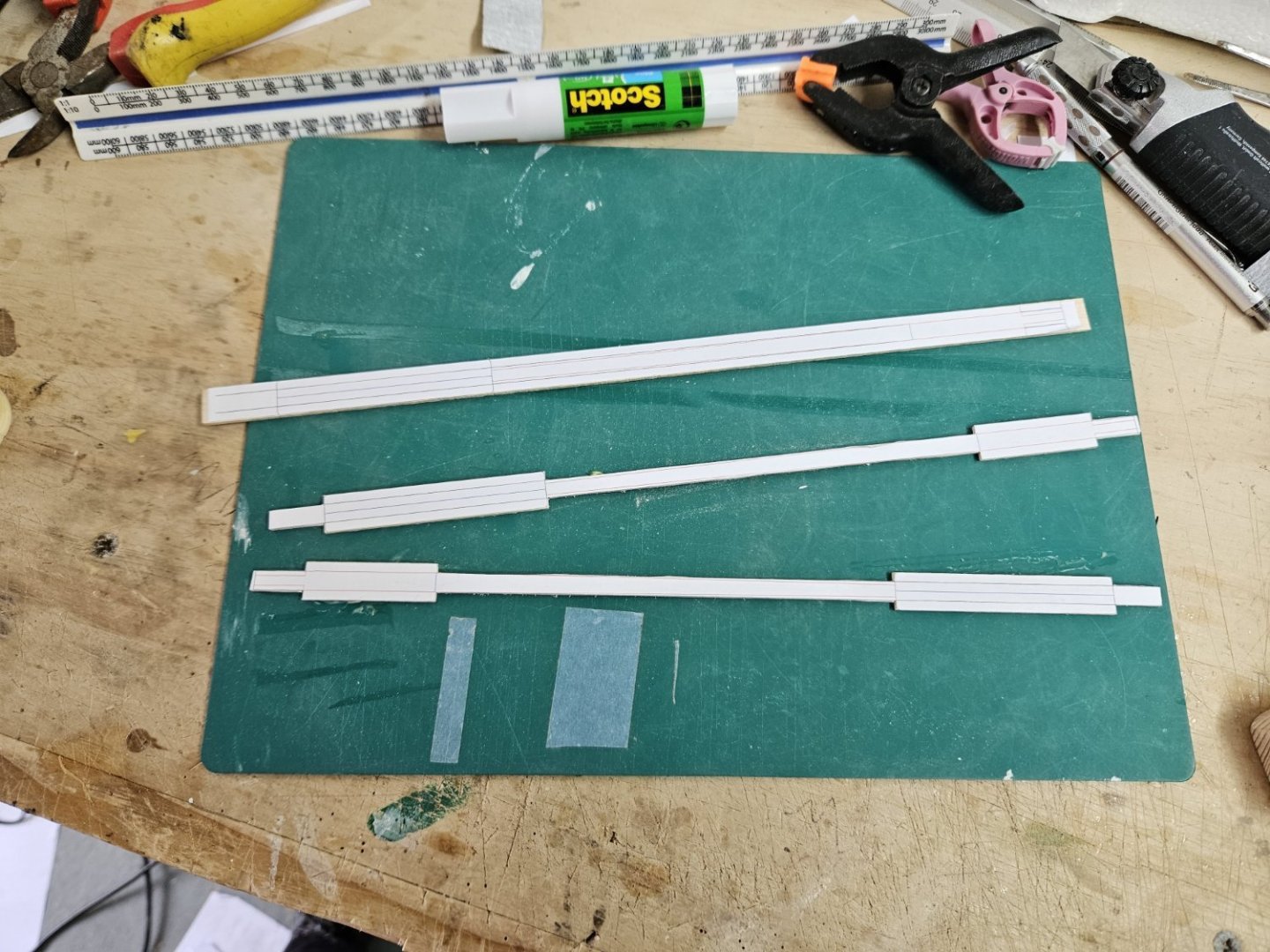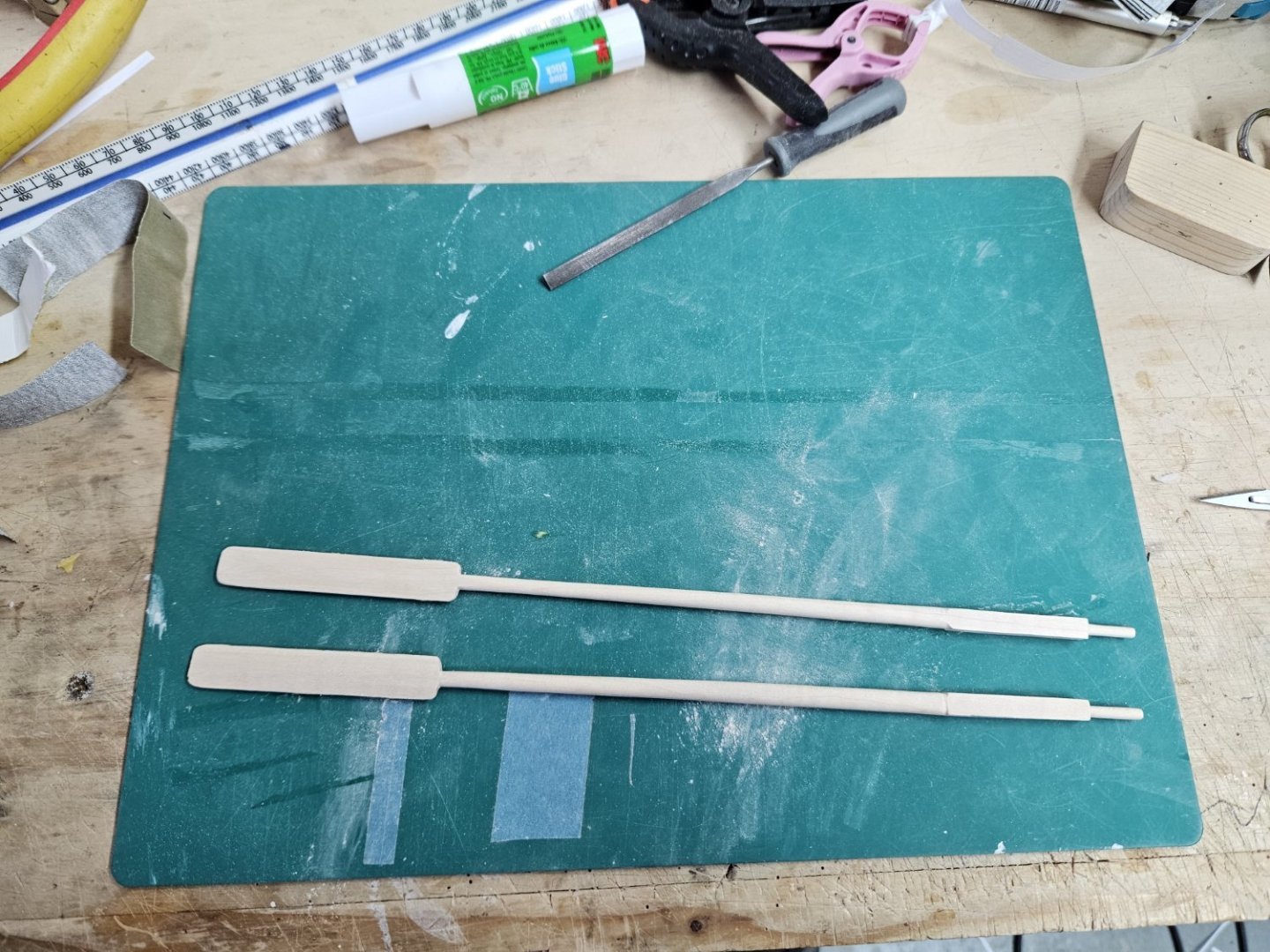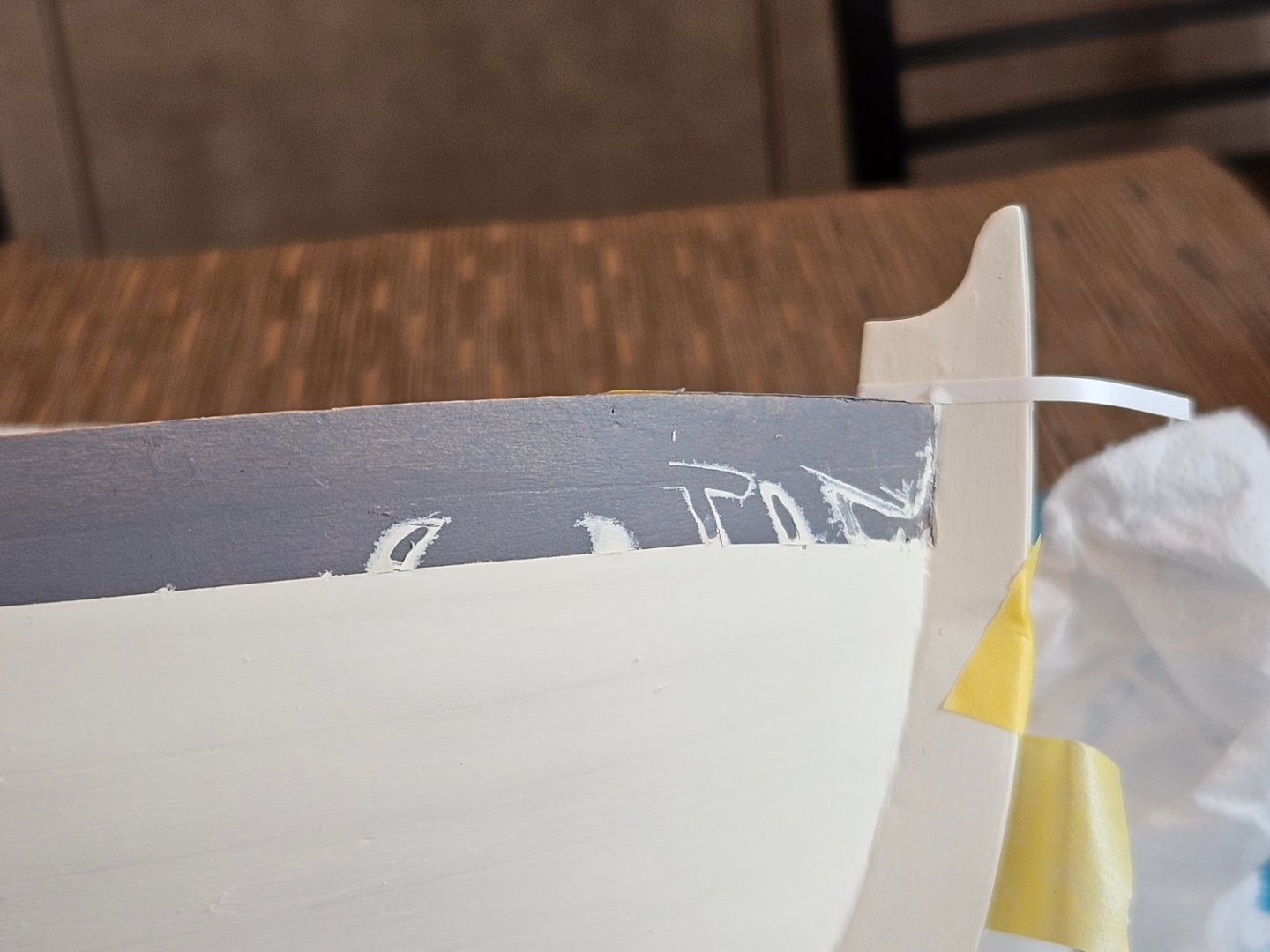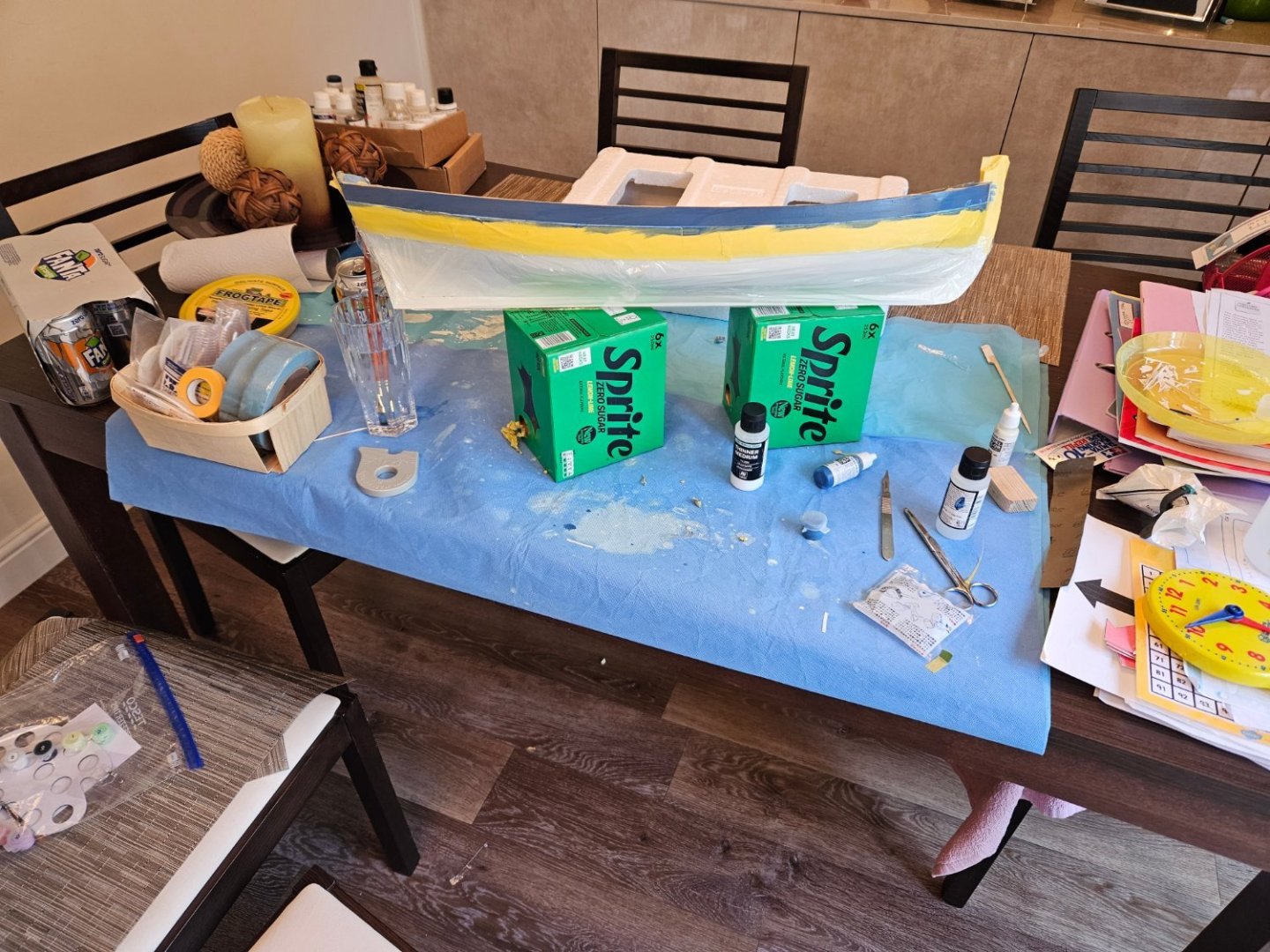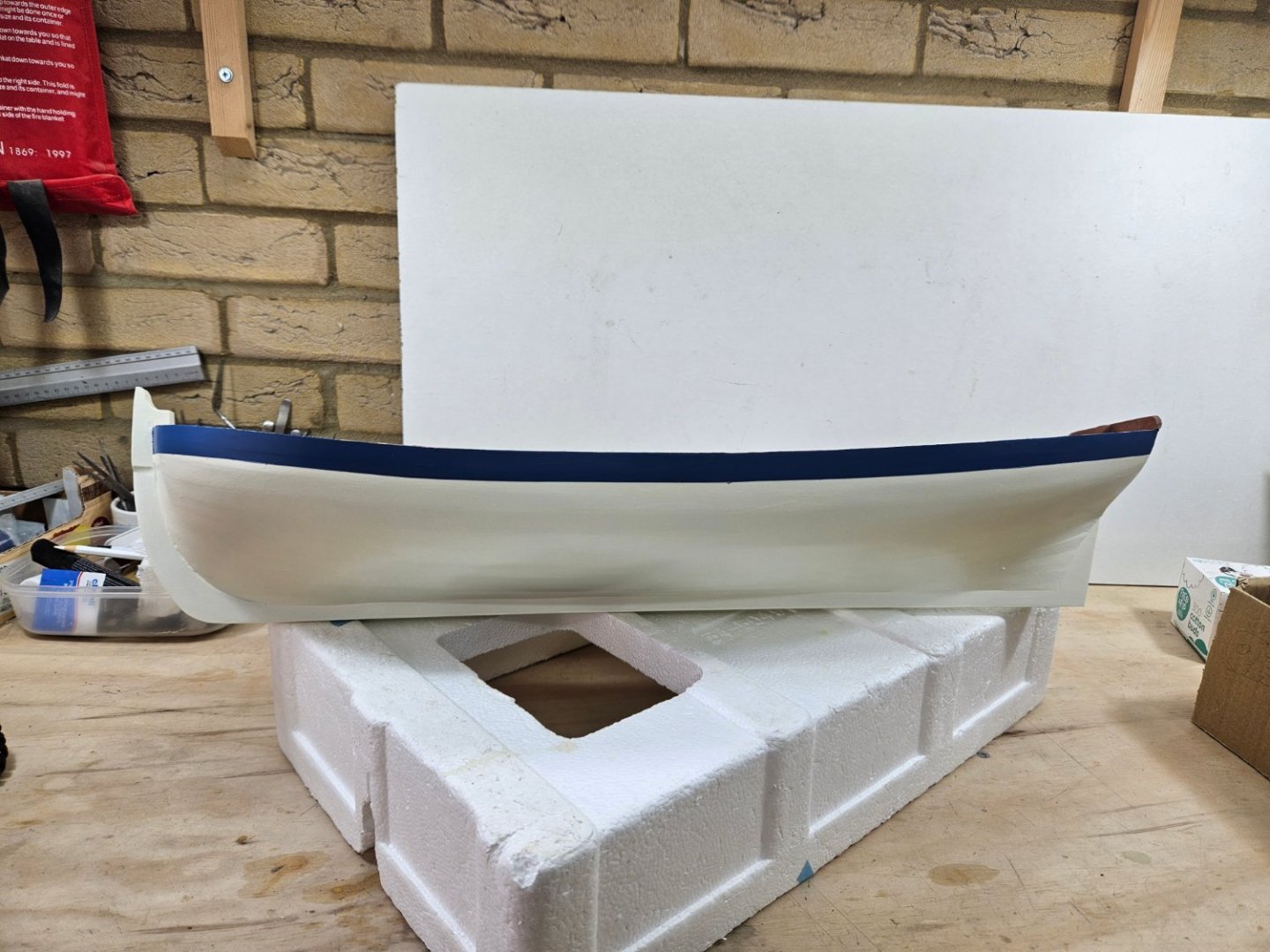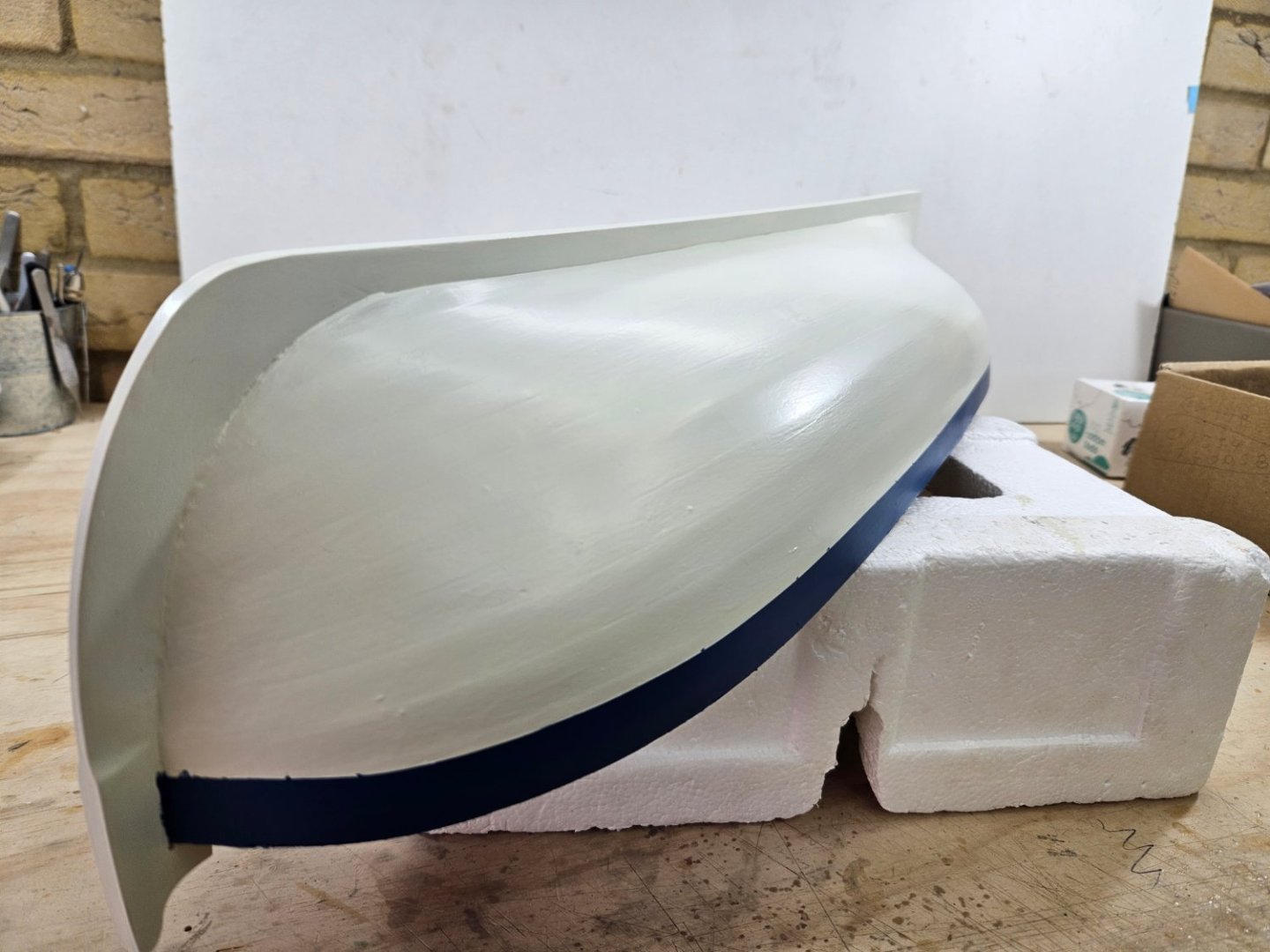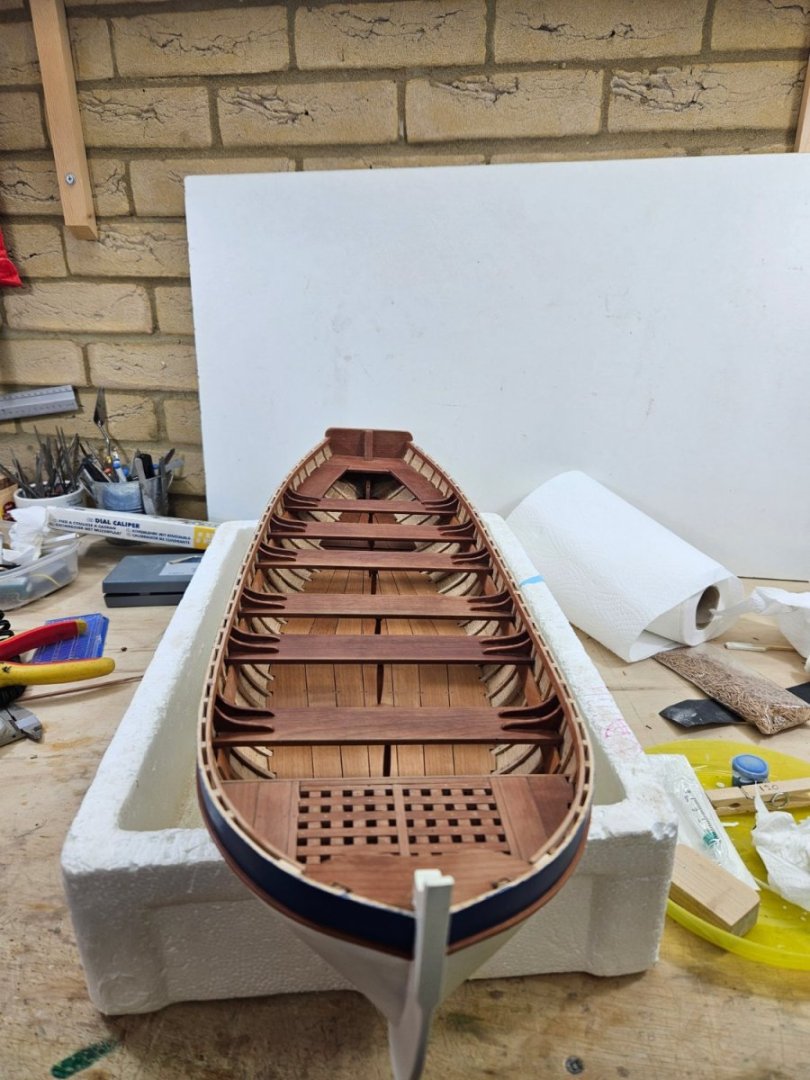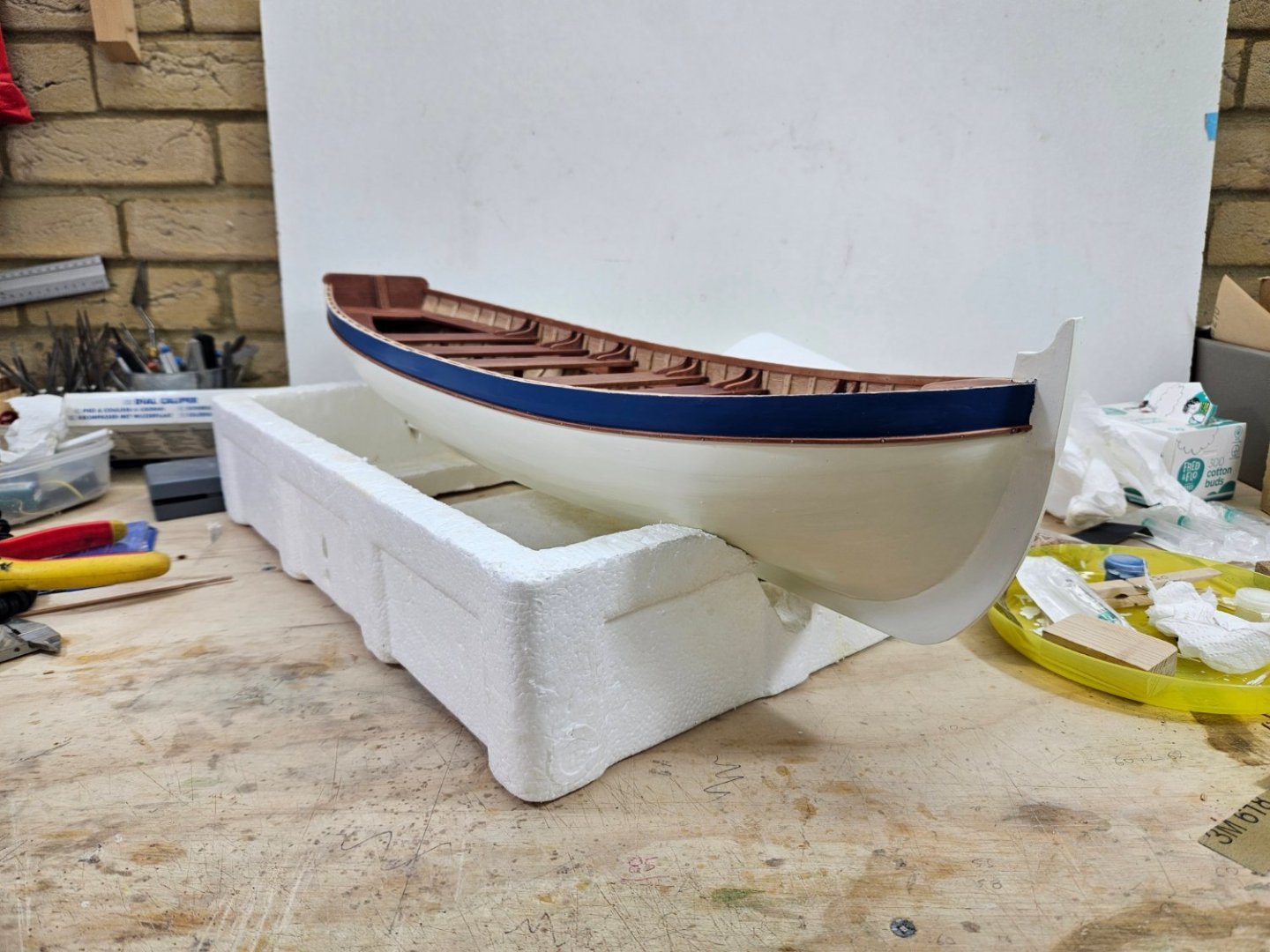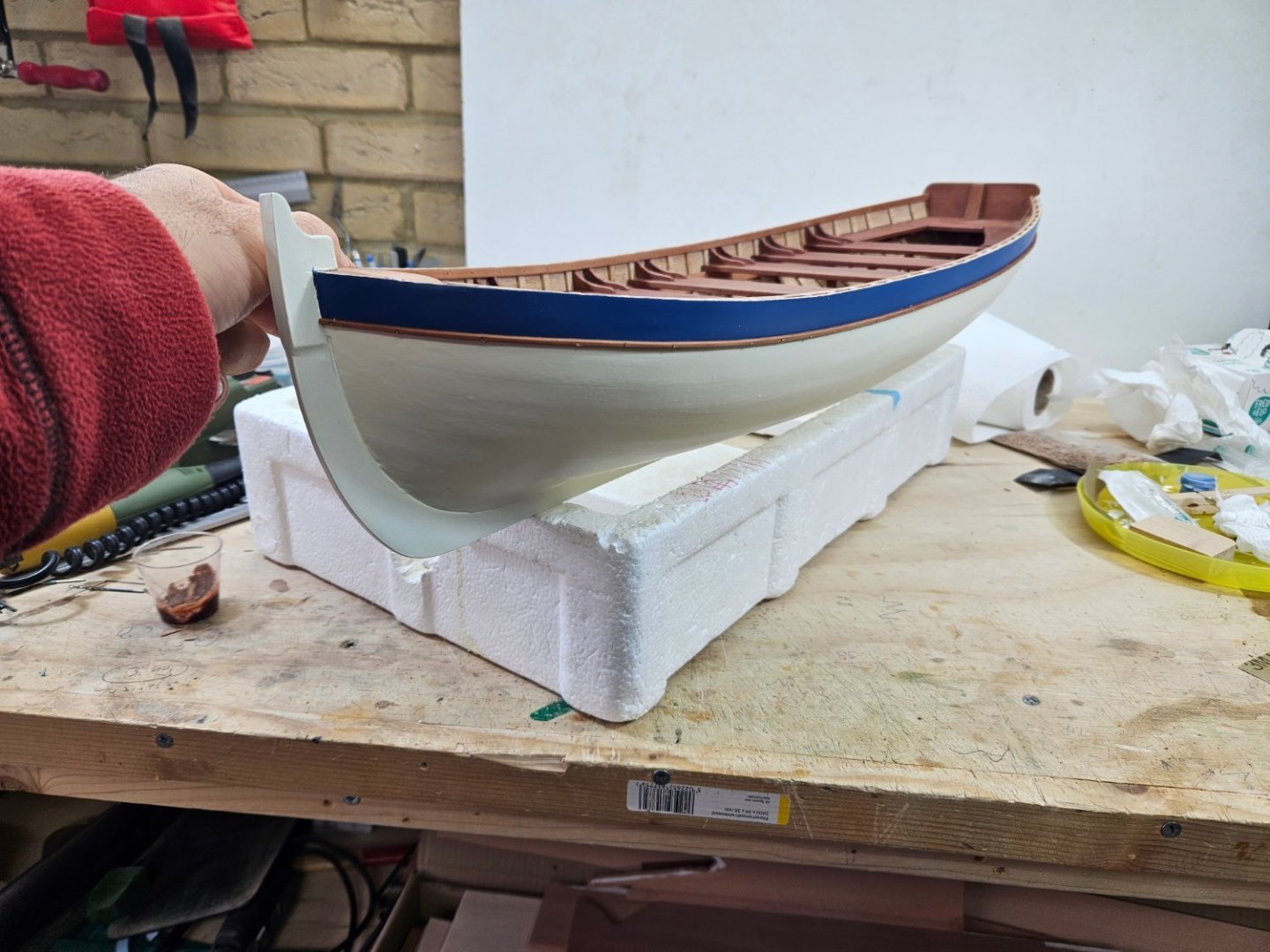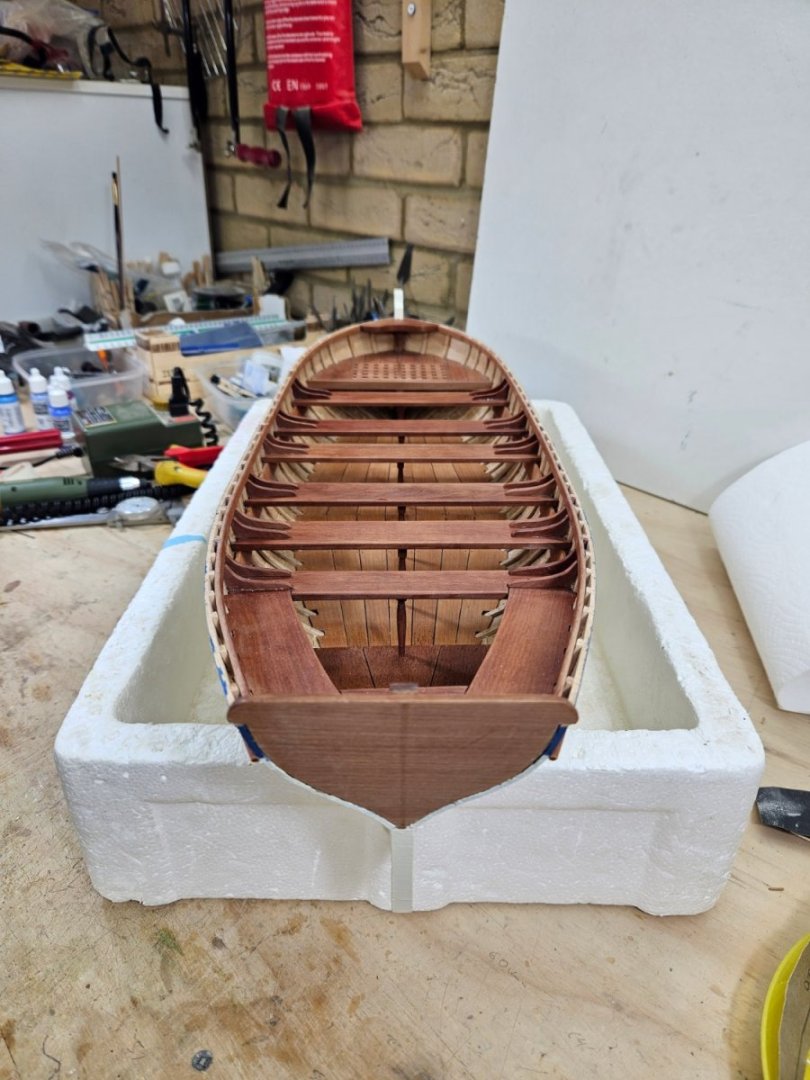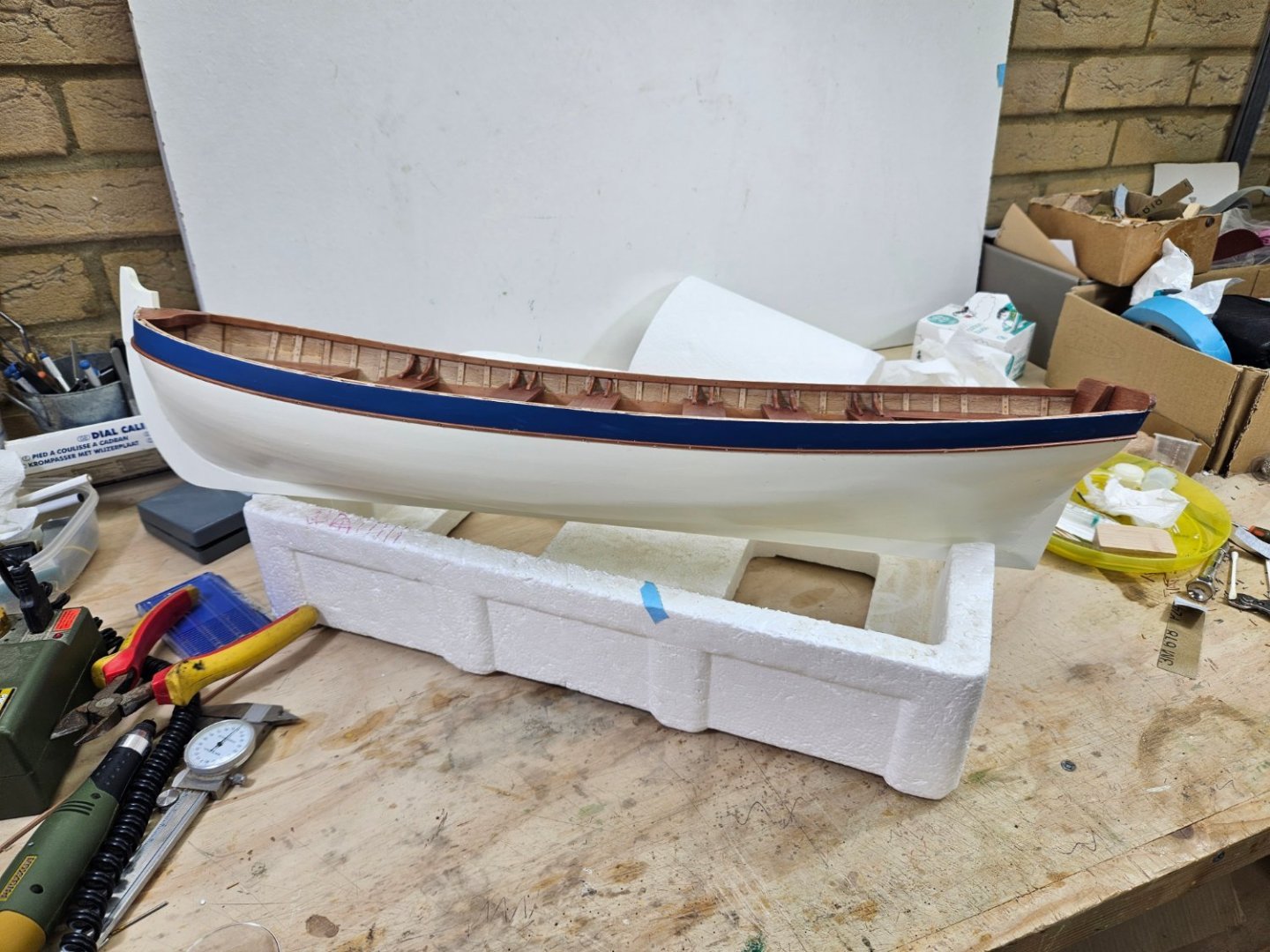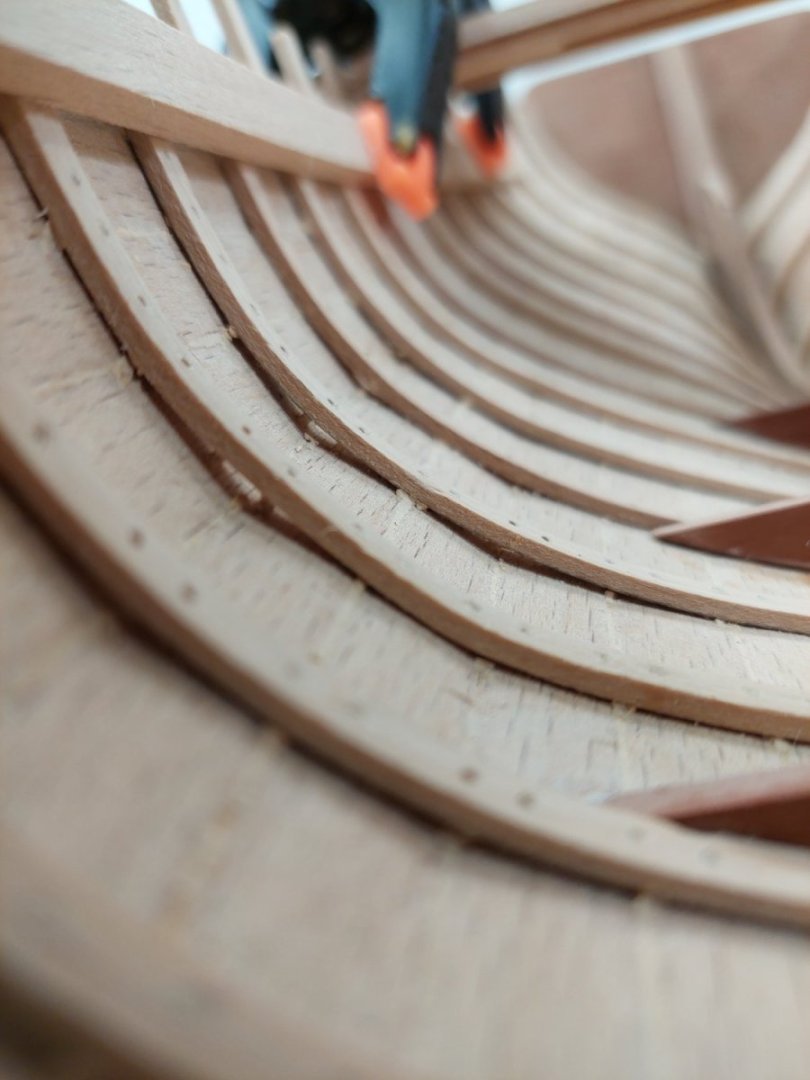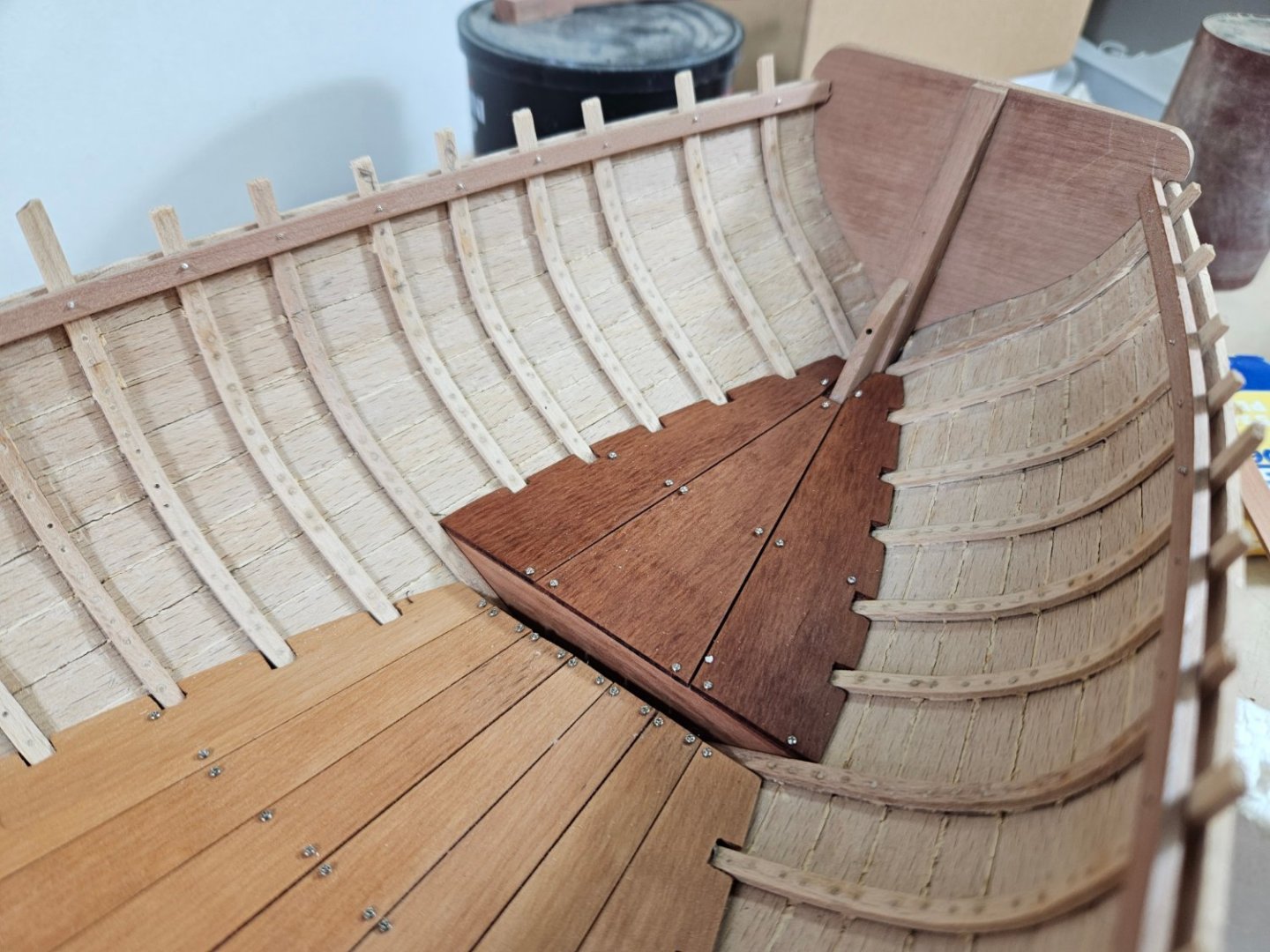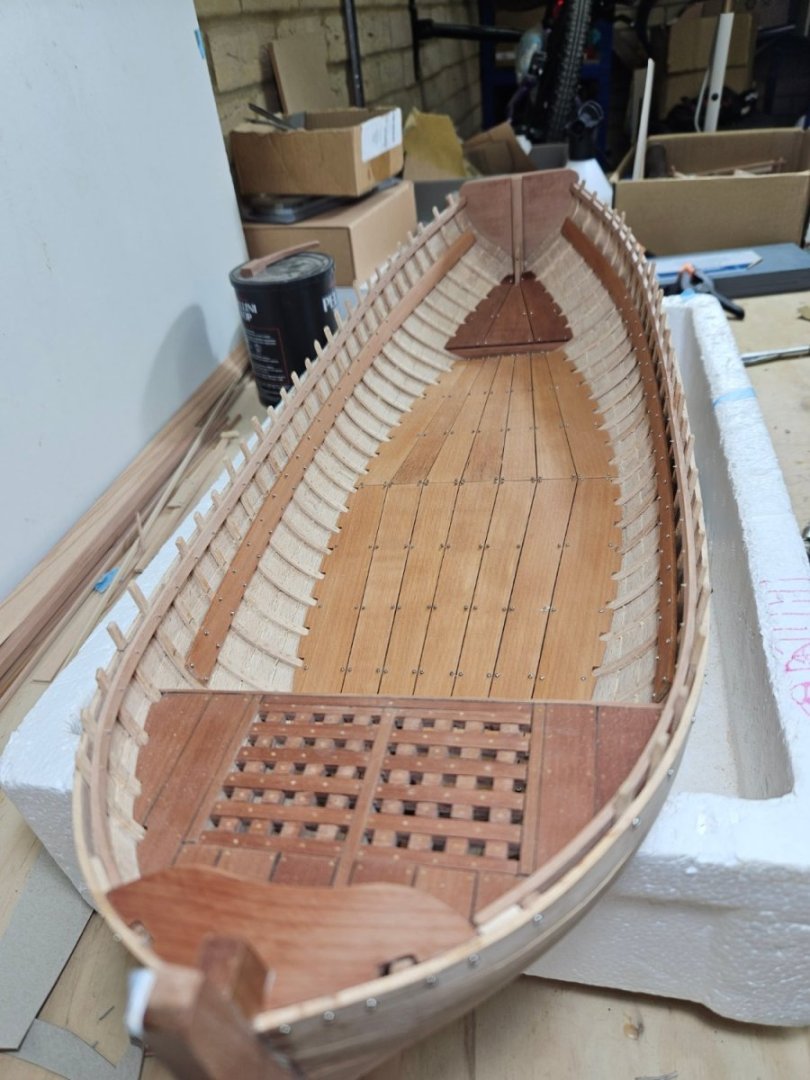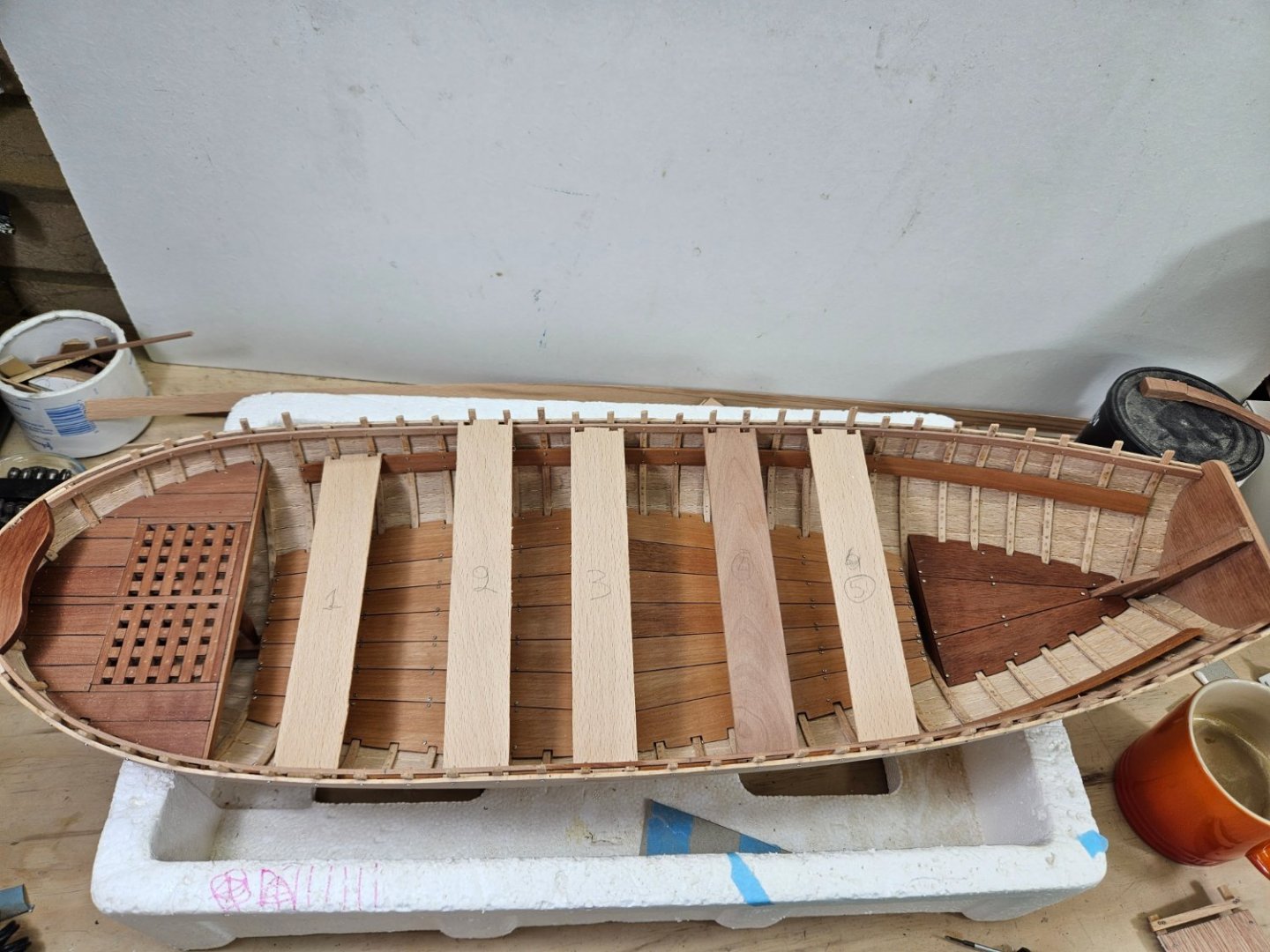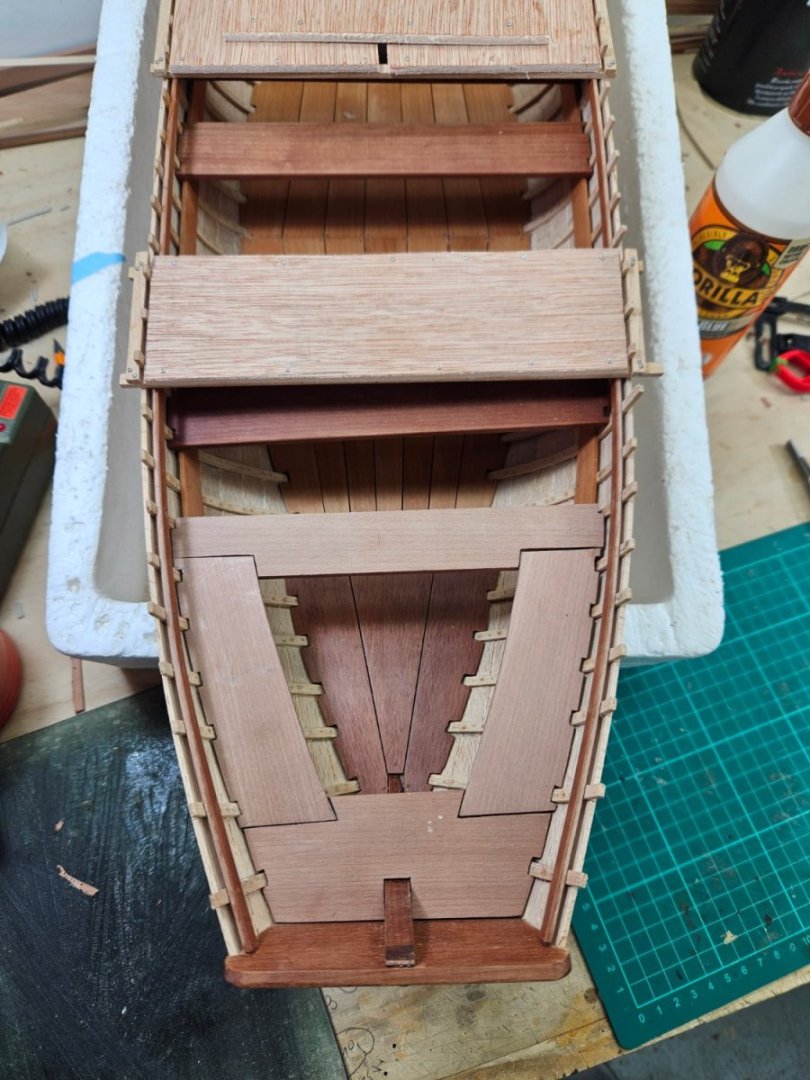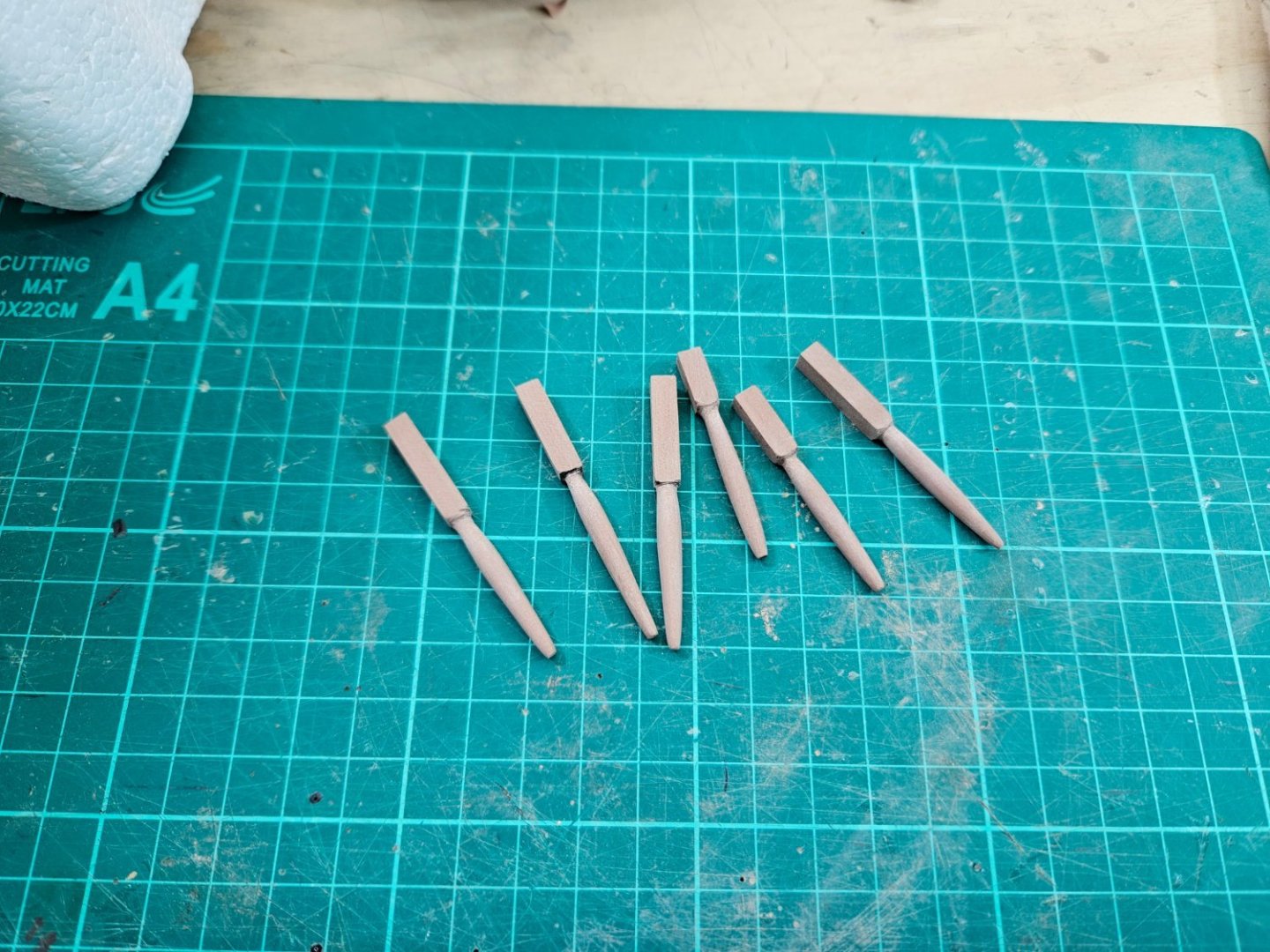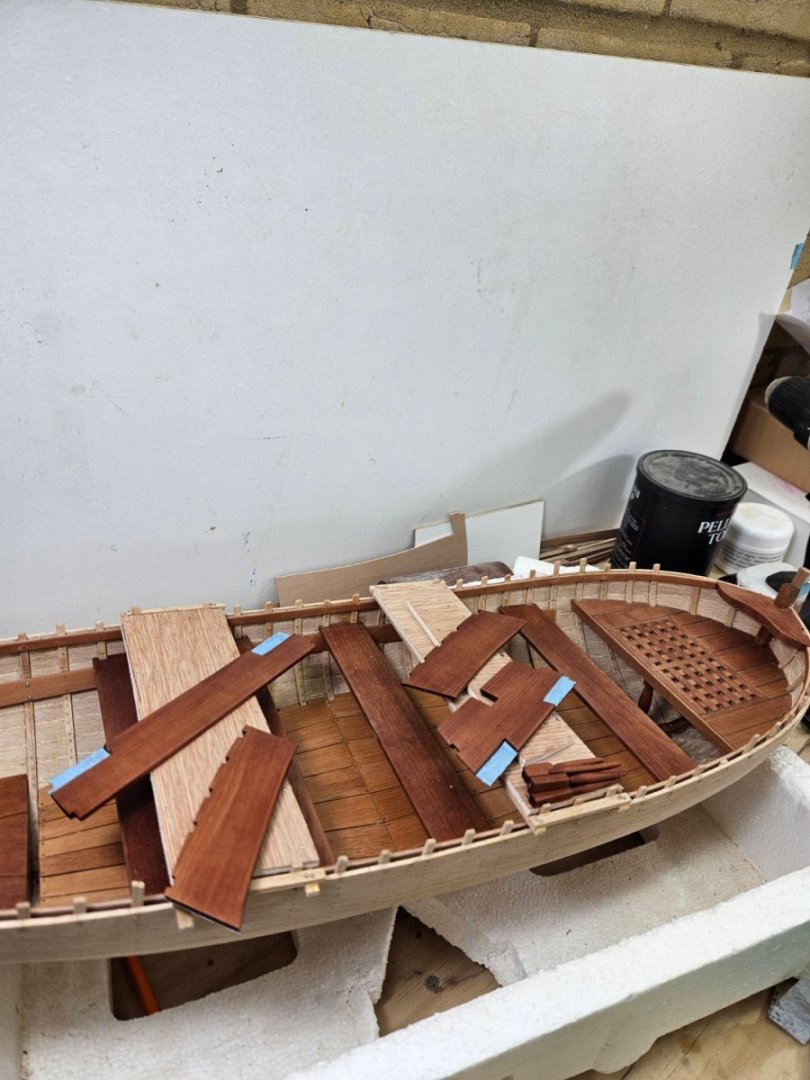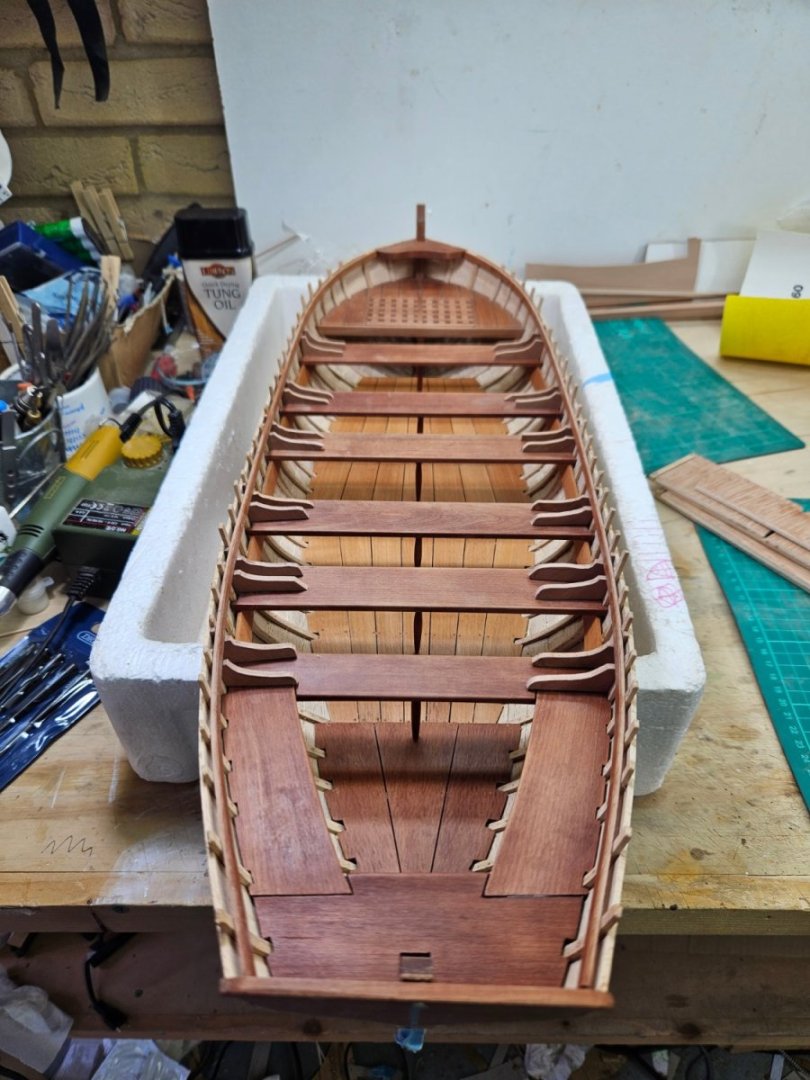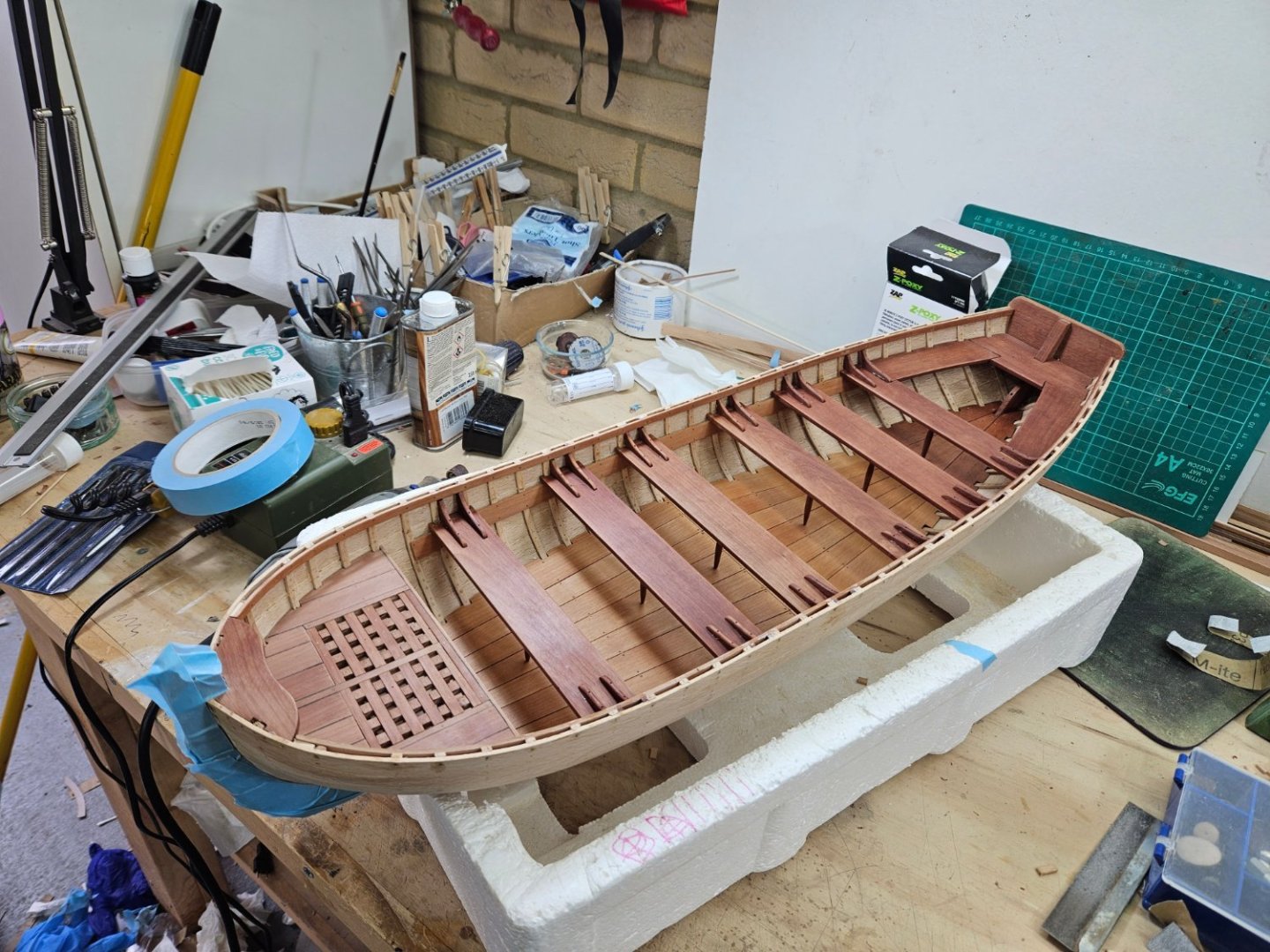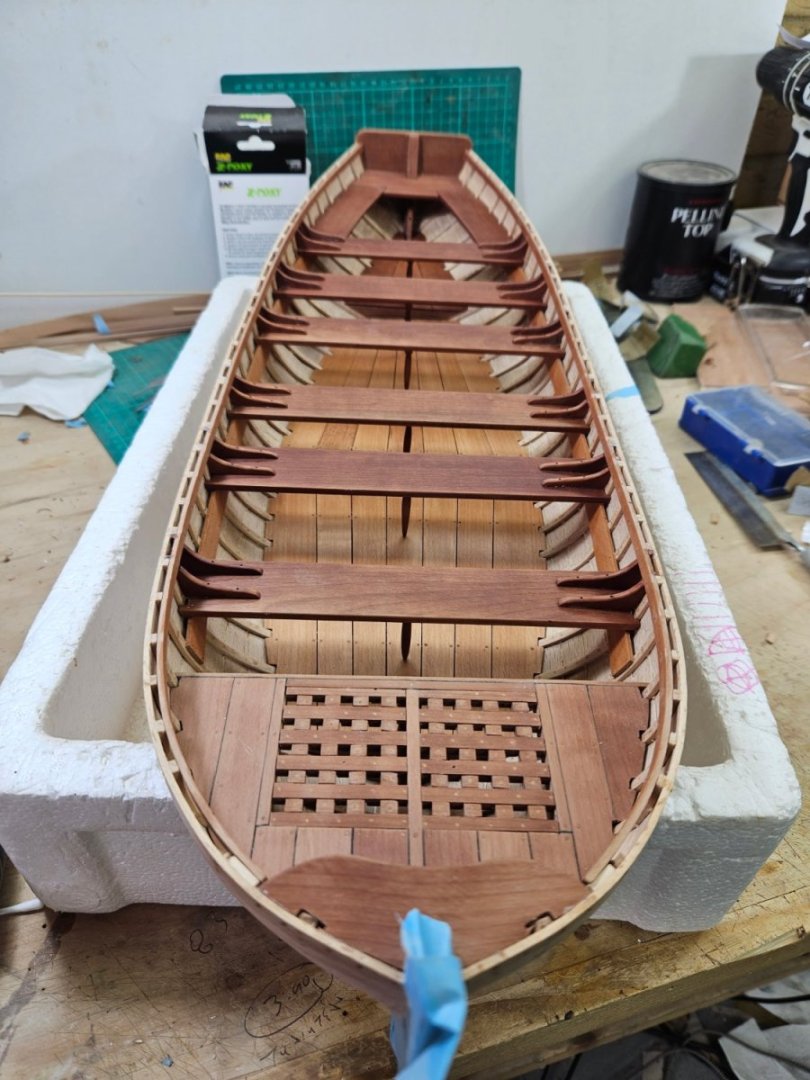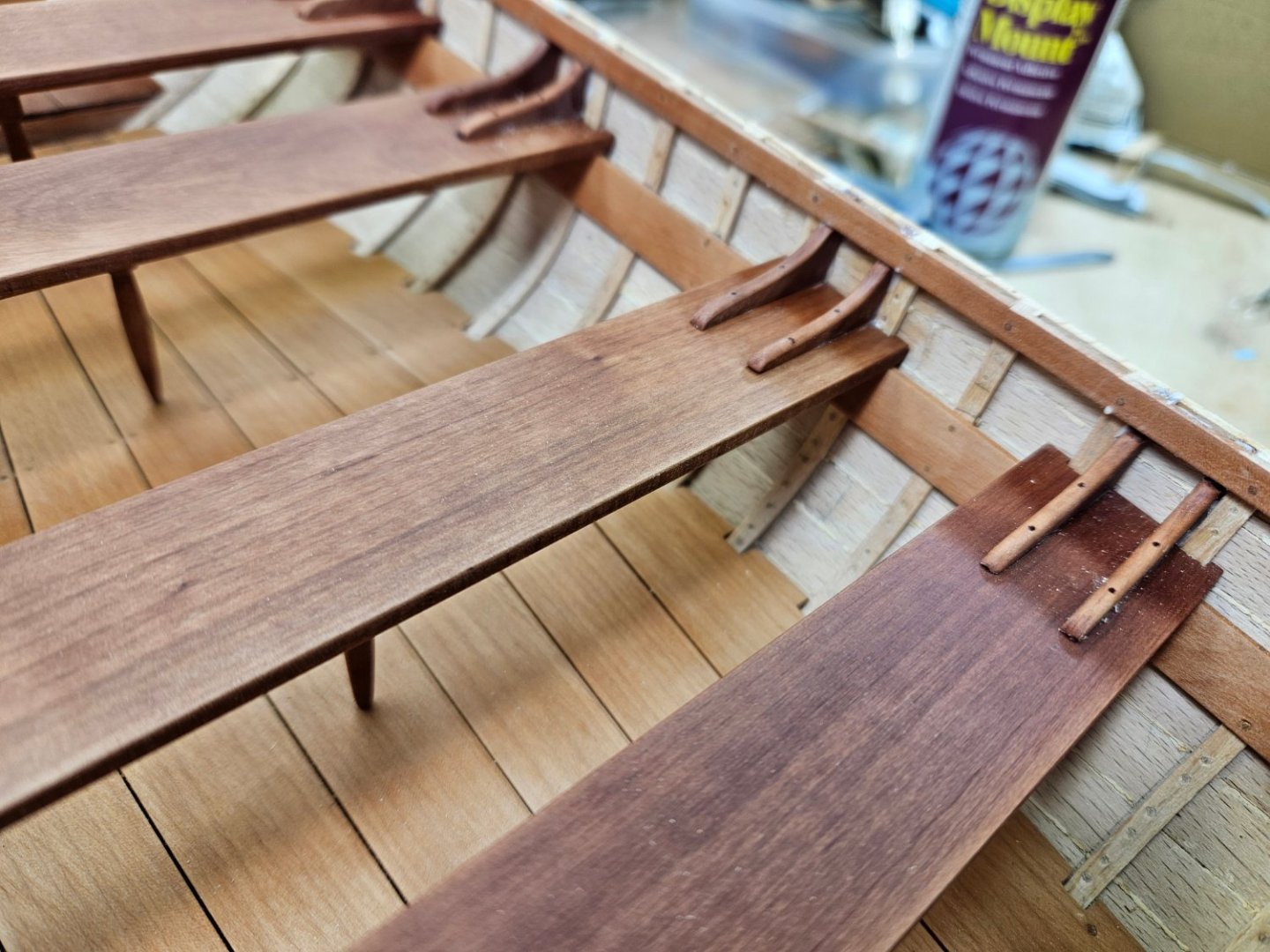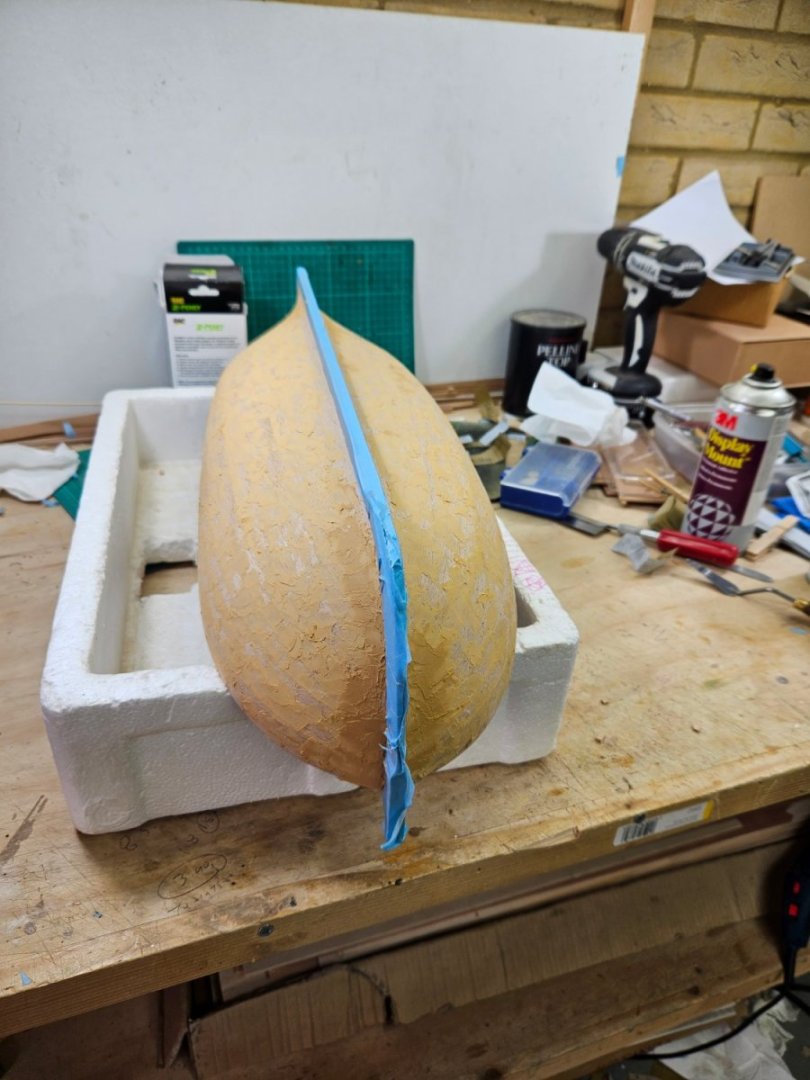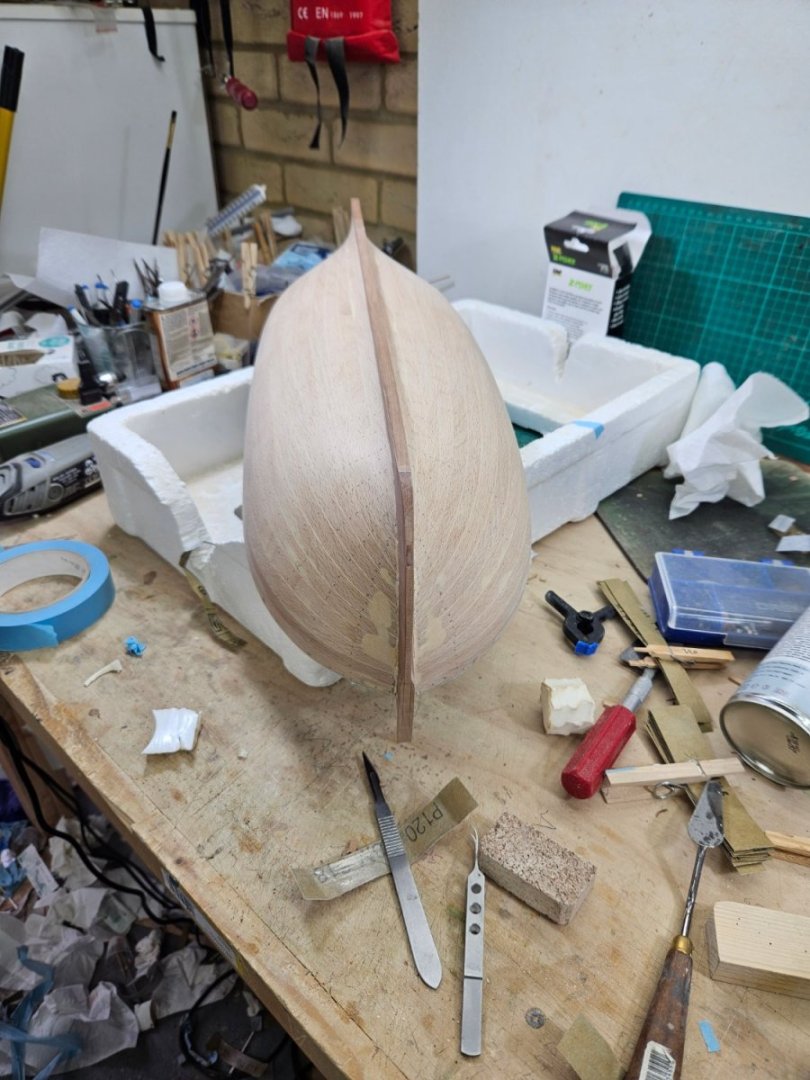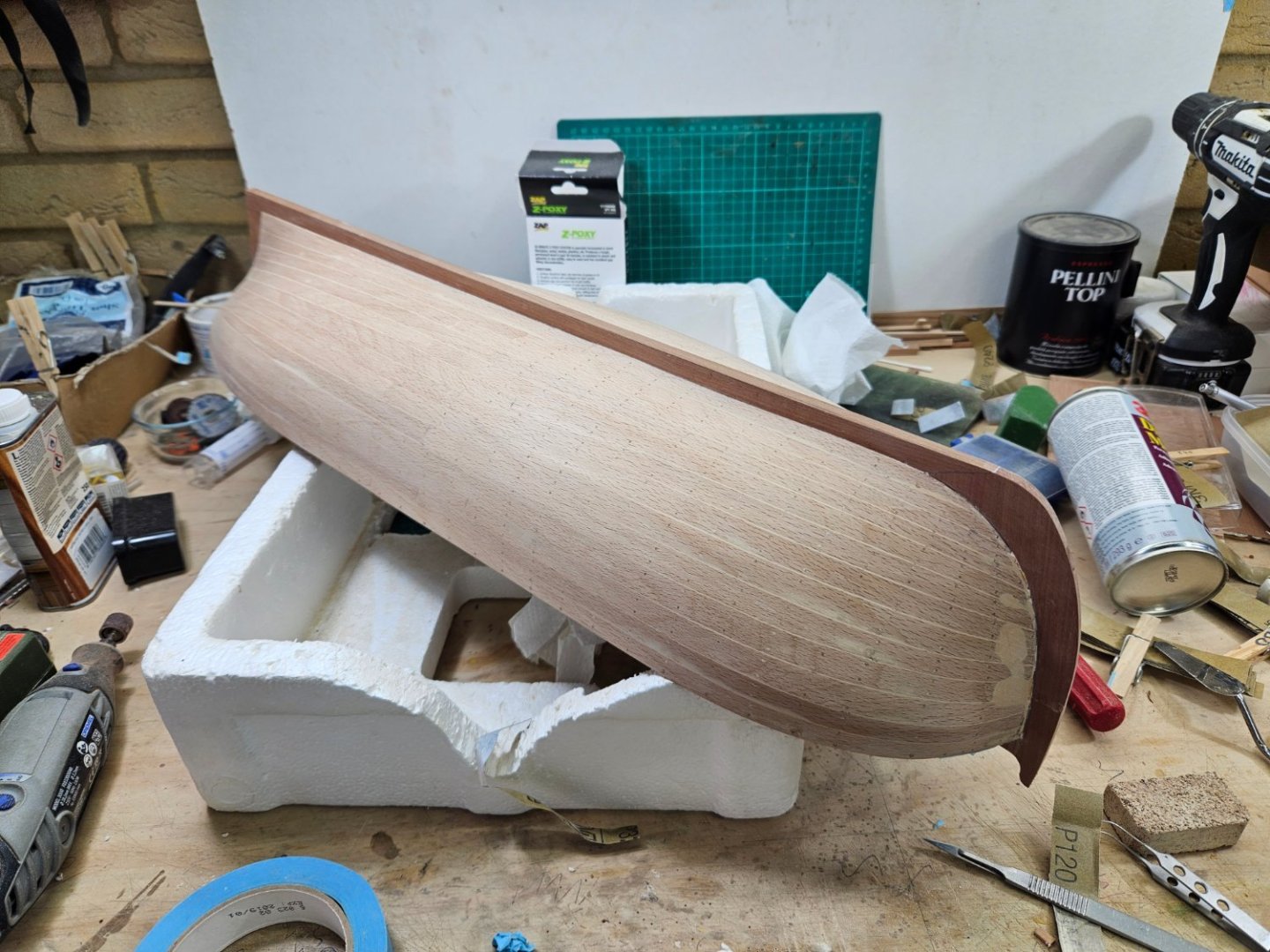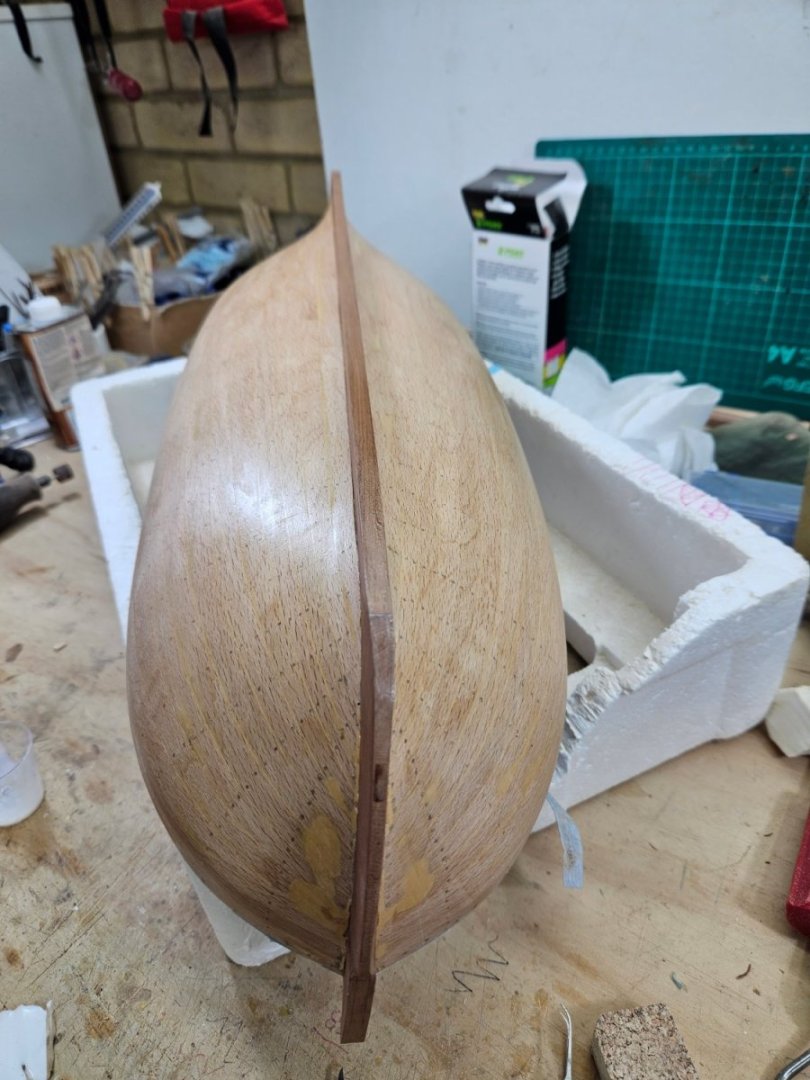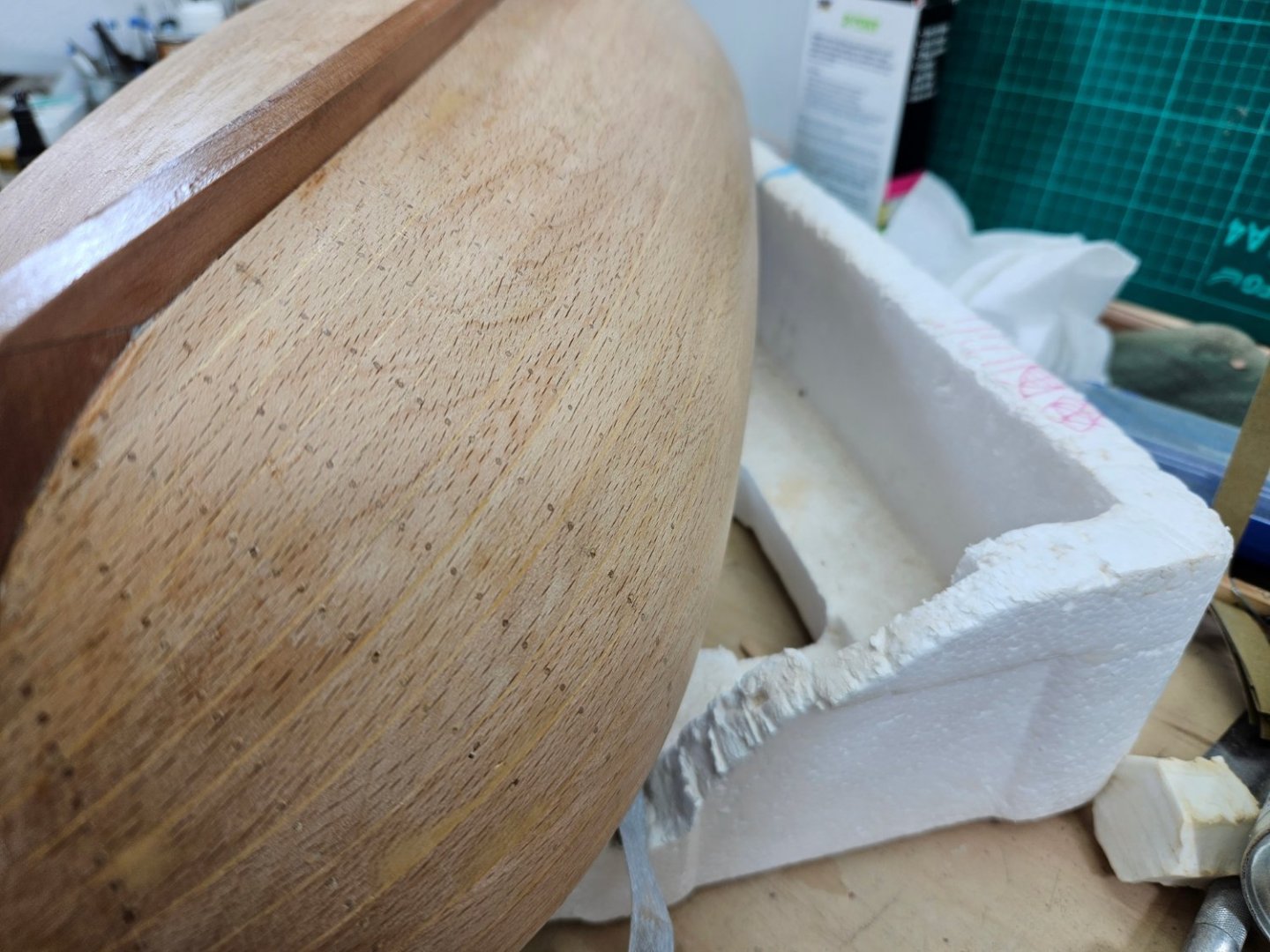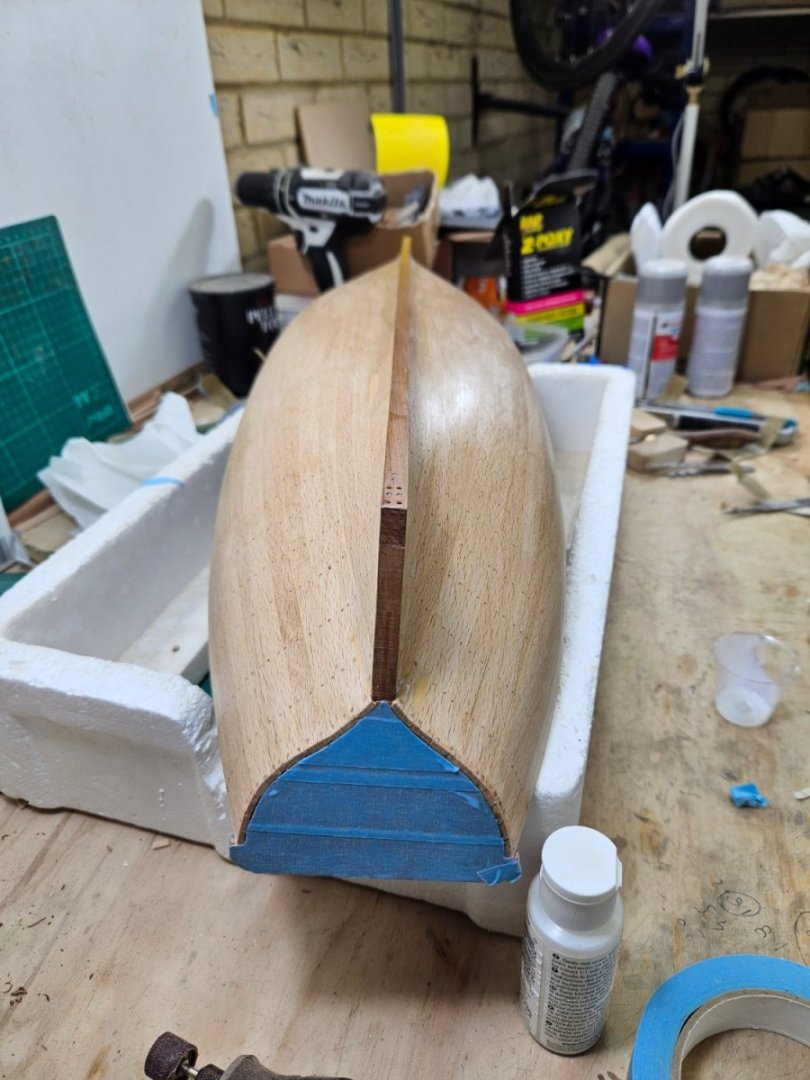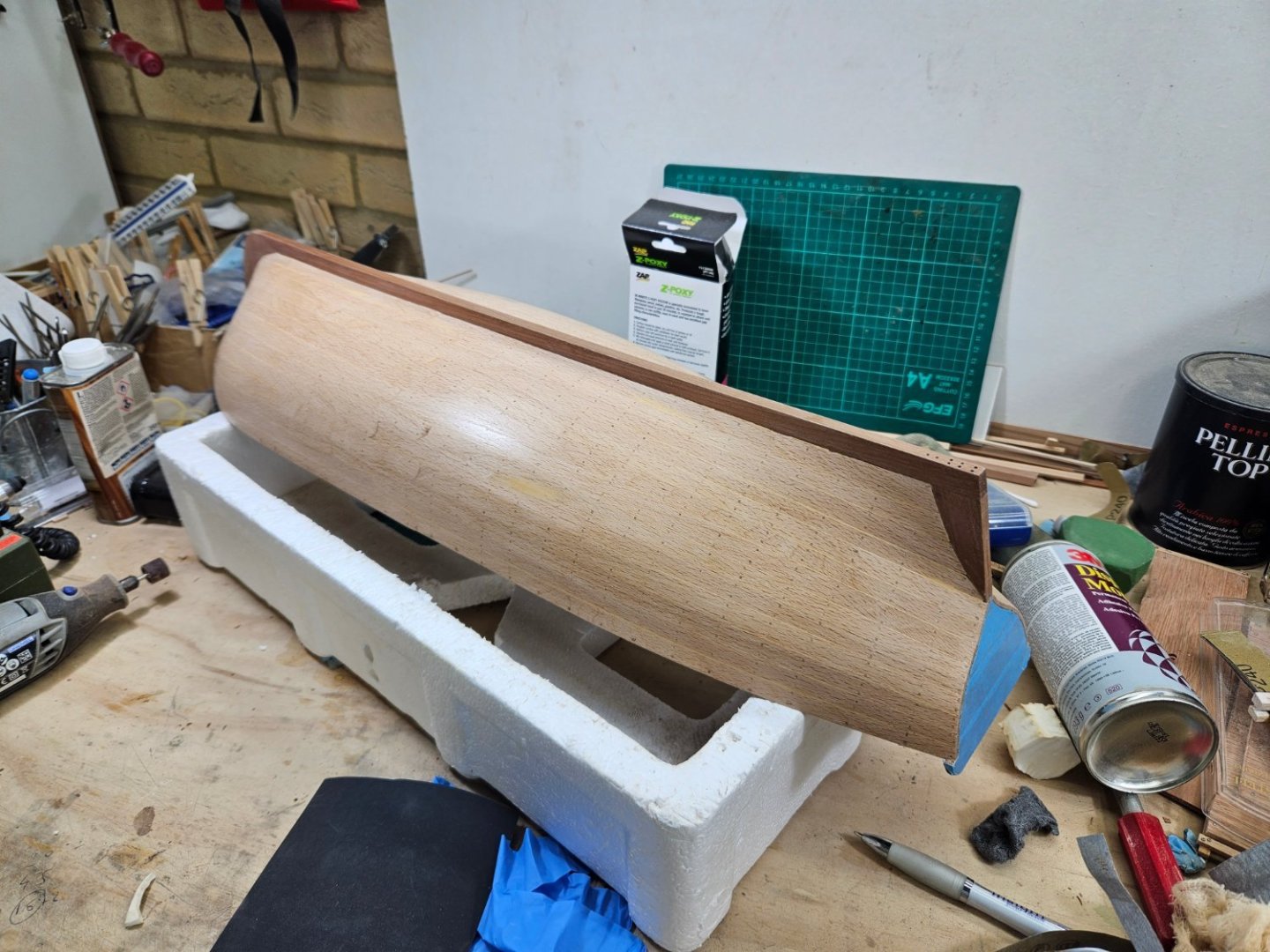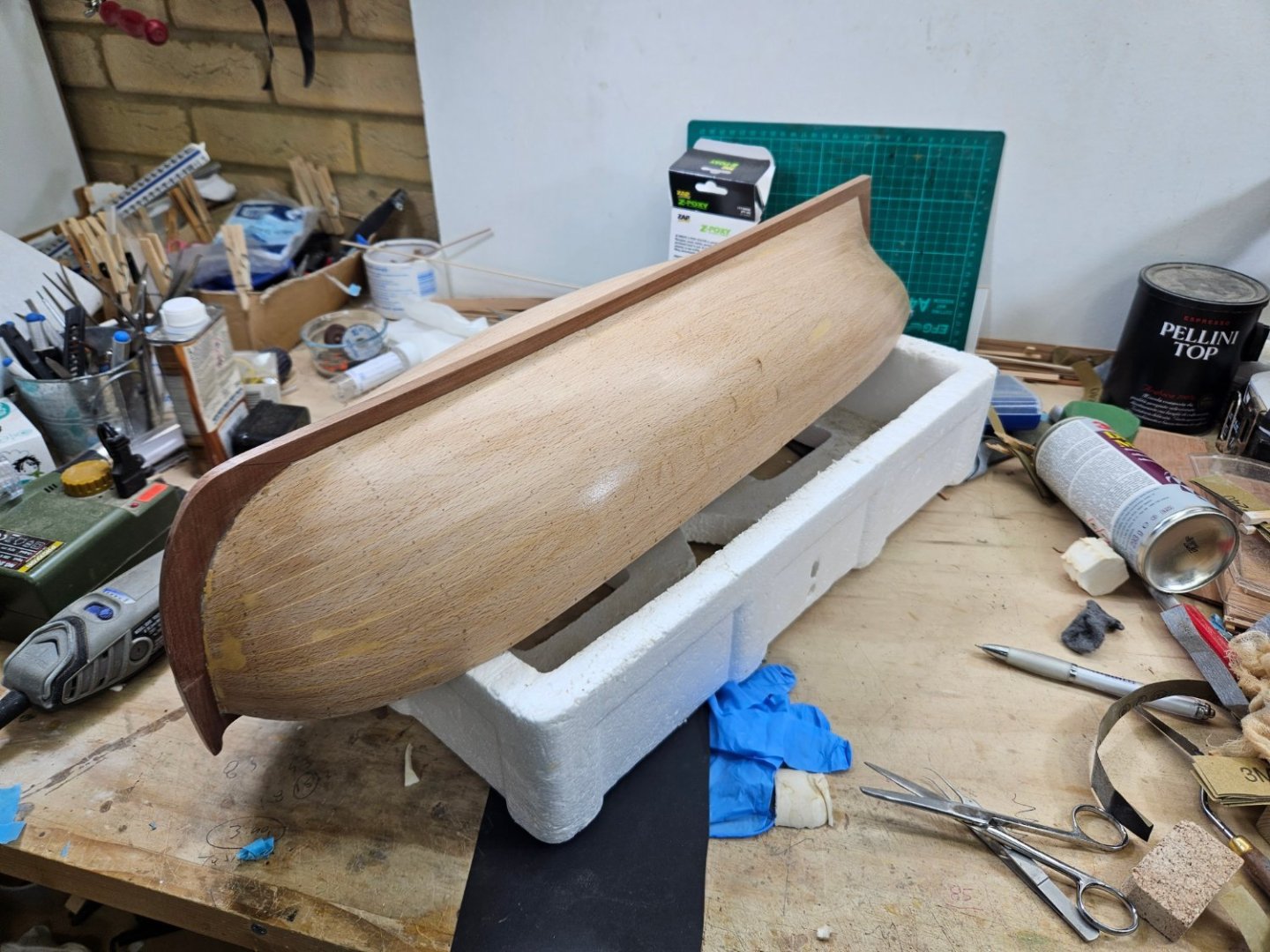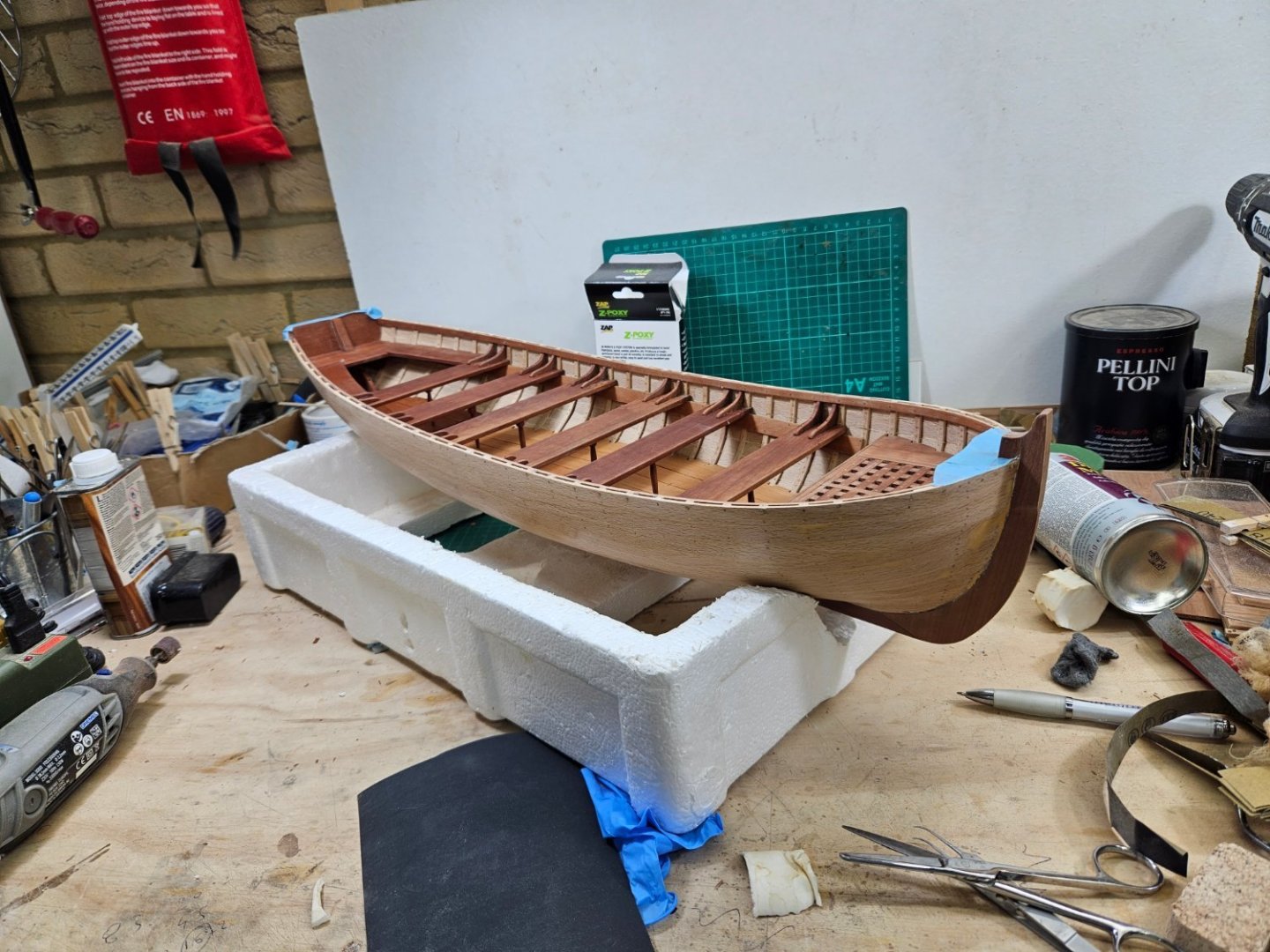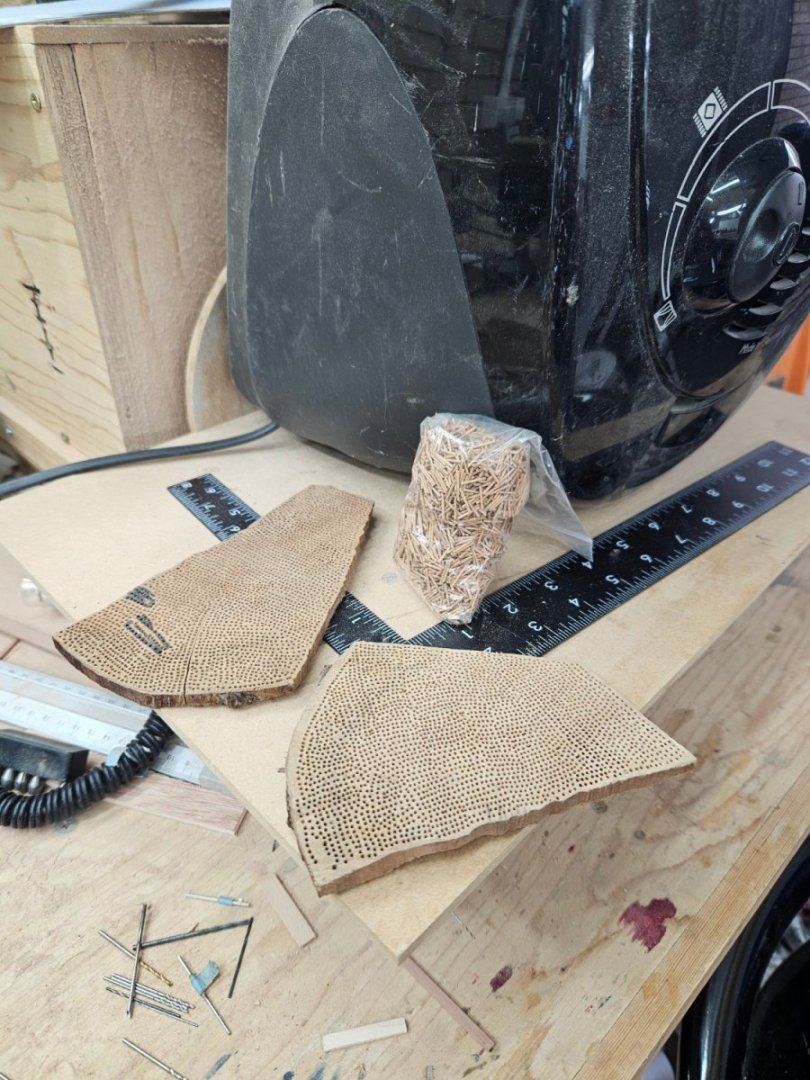-
Posts
1,600 -
Joined
-
Last visited
Content Type
Profiles
Forums
Gallery
Events
Everything posted by vaddoc
-
Dear all The boat is finished! After a lot of head scratching I ended up with a solution for the davit sockets that looks reasonable. The davit it self was also quite challenging to make but I think it came out fine. Last thing to do was to install the thole pins and the cleats. I still need to take some proper photos, make some type of cradle and order a display case. I think it is also appropriate to order the print from the National Maritime Museum or place some compact version of these plans within the case - we ll see. This has been a very enjoyable build and I certainly learned a lot. In future I will post pictures in the gallery. In the mean time however, there is another hull that has been gathering dust waiting patiently to come back into the shipyard. I do hope you will join for the Chapelle's fishing launch. I regret I have not been able to keep up with many logs I had been following - This is a period that life demands too much from me! My deepest thanks for your company and support in this journey Vaddoc
-
I d suggest experimenting with both. There are pros and cons. Enamels have far, far better coverage and are far tougher. Their depth of colour is better. However, they require mineral spirits, make a bigger mess and because they take longer to dry, attract dust. Painting inside the house may (will) create problems with the admiral. Acrylics are easier to use. I always tell myself next time I ll use enamels and end up using acrylics. Better range of colours as well. Check the relevant thread on painting with acrylics. Lots of good info. Seal the wood before painting. You can use shellac as Bob suggests but I find decoart multi purpose water based sealer superior and easier to use. After painting you must put some form of varnish over your paint or it will easily get scratched. I am disappointed with water based and polyurethane varnishes - I ll go back to enamels. Or so I say myself...
-
Dear all Time for another update I think. The boat is almost done! So, I finished all the oars, they came out fine I think with no failures. But then, I had to figure out what finish to use. Now, they are made of maple which is very white and apparently notoriously difficult to stain. I tried painting the oars white, (using the previous short oars I had made), staining and just Tang oil. I did not like the white colour, staining went really badly no matter what I tried so it had to be Tung oil. Photo bellow. So all oars are now ready Next, I painted the rudder and I made the tiller. Now, the tiller has a bit of story behind it. About 3 years ago, I salvaged a small piece of wood from an apricot tree in my parents summer house, now gone. I wanted to use a bit of that wood in this boat so made the tiller out of it. Very nice wood, really hard. Then I made the hinges, secured to both the rudder and boat with CA glue and small nails, cut from brass pins, dipped again in CA glue. Now, next project was the oar locks. I ve no idea what would be used back then but I decided to use double thole pins. So I made the sacrificial base and rounded off some square pear strips. So I think really close to finishing. Of course, the whole point is the davit - this is the reason the boat was built! I need to make the sockets and finish the davit. I also need to make a few cleats. I also have some thin soft leather, maybe it would be nice to add a strip to the oars. My very best wishes to all Vaddoc
-
Thanks Greg! I guess this settles it then, although the drawing shows less brackets and probably removable thwarts - Alan is right.
-
@allanyed Allan, you are probably very correct, and I say probably because I simply do not know; I had the lines of the boat but I could not find any plans or info how these boat were actually put together. I searched the net and the few books I have but I did not come up with anything helpful, apart from some dimensions in May's book. So, I improvised and decided to have fun and make it look "busy" to the ignorant eye, knowing it is very probably not historically accurate. Now, as for the grating, the answer is very simple: I really wanted to try and make grating just for the fun of it, I originally intended to put it in the floor but then surfing the net I saw the photo bellow and changed my mind. I am afraid the depth of my knowledge is skin-deep being a landsman that strangely happens to love boats! Best wishes Vaddoc
-
Ok, time to put the oar issue right. I lengthened the oars and they do look more proportionate. The following photo shows the three different stages in the oar construction - it is truly a lengthy process. I have not found a way to stain the oars so I think I ll just paint them white. I would much prefer though a dark yellowish shade. Vaddoc
-
I am not ever playing poker with you Craig! You keep raising on me! 16 feet would be 49 cm. If you guys could turn a blind eye, we could go for 40 cm that is technically much more feasible and still give the visual impression of a log oar.😉
-
(sigh) Craig, you are of course right. I checked May's book and it does give oar lengths. For a 21 foot boat, oars would be 13 feet length or 396 mm in the model, my oars are 255 mm long. Alright then, back to the drawing board it is! Thankfully, I have plenty of maple. Vaddoc
-
Dear all I had a bit of annual leave so I worked a lot on the boat and I have a few more pics to share. @allanyed Unfortunately Allan, my poor choice of wood means painting the hull is necessary! Ok, so I made the gunwales which went smoother than I expected. Secured with many screws, later changed to wooden nails. I also installed the two knees at the transom. So next is the rudder. It will be a basic one based on the dimensions given in May's book and pictures I found on the net. The rudder is now receiving the very many coats of paint needed due to the acrylics' poor coverage. So while this is cooking, on to the oars it is. I sat in the computer and made a template. I wanted to use a lighter colour wood like boxwood but I only have maple which is very light colour but also a wonderful wood for modelling. I experimented with a bit of dyes and oils but did not like the outcome. So these oars will be painted. So first glue the template onto wood. I switched from Pritt to 3M stick glue - difference is day and night, so much better. Then I cut the templates. Then I laminated them with PVA glue and many many clamps. The end result Then lots of brutal sanding with not so miniature tools. I think it went ok! 4 more to go. Till next time Vaddoc
-
Dear all A lot of work done, time for an update! Done Craig! Not with Shellac which I dislike but with a water based sealer. Went well and should help Done! Yes, the hull is now painted. It sent reasonably well but I have to admit it has been my worst paint job. Poor surface preparation, hasty and a bit sloppy paintjob, near disaster varnishing. So here it goes: I used grey primer which is supposed to be permanent when dry. Well it is not. I tried to clean the surface with Isopropyl alcohol and immediately started lifting it. Still, no harm done. Then I masked and taped off the hull using frog tape. I actually forgot I had a large supply of various Tamiya tapes - stupid me. In any case, again no harm done - a bit of bleeding which was covered with the next layer. Acrylic paint is pretty horrible. It took 20 coats of ivory to cover the grey primer and still did not completely do it. However, being water based means I can work in house which is a huge advantage. I always swear I ll use enamels next time and always seem to end up using acrylics. No brush marks, Valejo paints are wonderful but surface underneath far from perfect Acrylic paint is also so easy to scratch, needs a varnish. Again, paint is supposed to dry permanent but trying to clean with IPO started melting the paint. Still, no major harm done. I used the Valejo polyurethane varnish that previously gave me good results. Not this time! In all honesty though, this varnish is now 6 years old. In any case, it did not brush well although left no brush marks, took ages to dry, and did not seem to have adhered well to the paint as it started lifting in an area I rubbed to remove a drop of PVA glue. I managed to fix this by brushing a bit more varnish but overall, I know this top coat is a bit rubish. Then, I added the two strips of wood - sanded and coated with Tung oil. Not long now! Still have to make oars though Best wishes Vaddoc
-
Thanks Craig You are right but I should have done this earlier, when the interior was empty. I think now is a bit too late!
-
Dear friends One knows it's been a very long time since his last post, when he needs to search for his log! But here I am, so time for an update and a few photos as there is definitely progress made. Allow me to shout a word of caution: DO NOT USE BEECH FOR PLANKING! I did read on wood database that it has a lot of movement in service, but the reality is just ridiculous. Any more movement and the wood would grow feet and run out of the shipyard. First of all the planks shrunk. Initially there was no gap at all as I took pains to make them perfect. Then huge gaps appeared. I filled these in and then the planks shrunk more, with gaps opening once again. Then the boat kept changing shape, sometimes the two sides wanted to come together but others wanted to get away from each other. The biggest problem was that some planks pulled out of the ribs, as shown in the photo bellow. I had no idea how to fix it but in the end, the boat just changed shape again and the gaps closed. Magic! So, next I finished the floor boards and also the small deck aft. I replaced all the screws with treenails and then, it was time for the thwarts. I used the original drawings which kind of hint where the thwarts should go. The benches aft however took an awful lot of head scratching to understand how they could be arranged, without massive wood work. I used the internet and some common sense and I think I came up with a reasonable solution. I then made the legs, they came out alright I think. Then, I made the knees to hold the thwarts. This took a long time as each knee has each individual shape and then had to be drilled, sanded and get a coat of Tung oil. Then all were assembled, using 30 min Zpoxy which I am certain was the way it was done back in 1750. Now the boat is structurally solid and complete. Now however it is time to think about painting the hull. It really needs to be painted but with this cracks between the planks, it is not going to work. So they had to be filled. I used again Osmo filler which I really like. This is how the hull looked afterwards. The sanding that followed will be sang by bards for centuries. I went down to 320 grid, I really wanted 400 but I run out of sand paper. Now, I am sure the cracks will reopen but this is the best I can do! Now, this is a hull that absolutely must be sealed. I never liked shellac and I ve been using for years a water based sealer (Decoart Americana). A coat went on, then sanded to 320 grid. Again, I really wanted 400 but I could not find even a small piece in the shipyard. Then another coat went on, sanded to 600 grid (I found a sheet somewhere) The hull is as good as it will ever be. When I find time I ll put a coat of primer and paint the hull - Ivory and Prussian blue I think. A last photo, till next time Vaddoc
-
Use this water based sealer. Sand wood smooth to 400 grit. Slap it on with a brush with no care. Dries in 15 min. If you want put a second coat. When dry, sand once more with 400 grit or 0000 steel wool. The wood will be as smooth as baby bottom and sealed. Then spray a bit of primer and then paint on top. Self life of this is very long - years. Deco Art Americana Multi-Purpose Sealer-8oz, Other, Multicoloured, 236 ml (Pack of 1) : Amazon.co.uk: Home & Kitchen
-
All done! I actually find making tree nails very therapeutic, calms (or numbs) the mind down. No excuse now, back to the boat, although I feel like walking in the dark - not sure at all how these things were made. A final picture with the 4000+ nails - about 0.7 mm, very hard wood. If you ever go down this road, if you get a set up that works well just make as many as you can,
-
.thumb.jpg.6fd4c1b78768bb3efd745ab810936005.jpg)
HMS Victory Renovation - Outer Planking Removed
vaddoc replied to Steve20's topic in Nautical/Naval History
Looking at the photo of Victory's planking above, it is incredible how thick the planks are. Considering the thickness of the frames and the inner planking, the hull sides must have been 2+ ft thick - solid wood. And still a cannon ball could penetrate. -
.thumb.jpg.6fd4c1b78768bb3efd745ab810936005.jpg)
HMS Victory Renovation - Outer Planking Removed
vaddoc replied to Steve20's topic in Nautical/Naval History
I googled it, there are 121 million oak trees in the UK, with 1 million in London alone. It needed 5000 oaks for Victory The tree starts producing acorns after 40 years! Oak trees - did you know? | Action Oak -
.thumb.jpg.6fd4c1b78768bb3efd745ab810936005.jpg)
HMS Victory Renovation - Outer Planking Removed
vaddoc replied to Steve20's topic in Nautical/Naval History
The amount of wood in these boats is staggering. A floating forest. Thank you for the photos and the info, very interesting. -
Ok, a quick update. At this time, I have no idea how to built the rest of the boat. Unfortunately it will not be historically accurate but at least I ll have fun building it! Now, today I sat to make a few thousand tree nails, I have to replace lots of screws and I ll need more as we go. It actually went very well, a short video follows showing how fast they can be made with the needle method. This tree nails are about 0.7-0.8 mm, maybe about 1 cm long. This wood is cherry - very hard. There must be about 1500 - 2000 nails there When the sleeves for my drum sander arrive, I ll sand the back and release the nails. But I will sit tomorrow and make more, my set up is working well and I should take advantage of it. Vaddoc
-
Many thanks to all for your likes and comments. @allanyed Allan, I simply can't remember how I set the distance between ribs. It my have been based on some data I had dug out or I may have just eyeballed it. But these boats had probably a hard life so they would have had ribs more closely spaced. But I do agree with you, it is easier to find accurate info for the pots in Victory's kitchen than construction info and plans for ships' boats.
About us
Modelshipworld - Advancing Ship Modeling through Research
SSL Secured
Your security is important for us so this Website is SSL-Secured
NRG Mailing Address
Nautical Research Guild
237 South Lincoln Street
Westmont IL, 60559-1917
Model Ship World ® and the MSW logo are Registered Trademarks, and belong to the Nautical Research Guild (United States Patent and Trademark Office: No. 6,929,264 & No. 6,929,274, registered Dec. 20, 2022)
Helpful Links
About the NRG
If you enjoy building ship models that are historically accurate as well as beautiful, then The Nautical Research Guild (NRG) is just right for you.
The Guild is a non-profit educational organization whose mission is to “Advance Ship Modeling Through Research”. We provide support to our members in their efforts to raise the quality of their model ships.
The Nautical Research Guild has published our world-renowned quarterly magazine, The Nautical Research Journal, since 1955. The pages of the Journal are full of articles by accomplished ship modelers who show you how they create those exquisite details on their models, and by maritime historians who show you the correct details to build. The Journal is available in both print and digital editions. Go to the NRG web site (www.thenrg.org) to download a complimentary digital copy of the Journal. The NRG also publishes plan sets, books and compilations of back issues of the Journal and the former Ships in Scale and Model Ship Builder magazines.


